Hood Ornaments
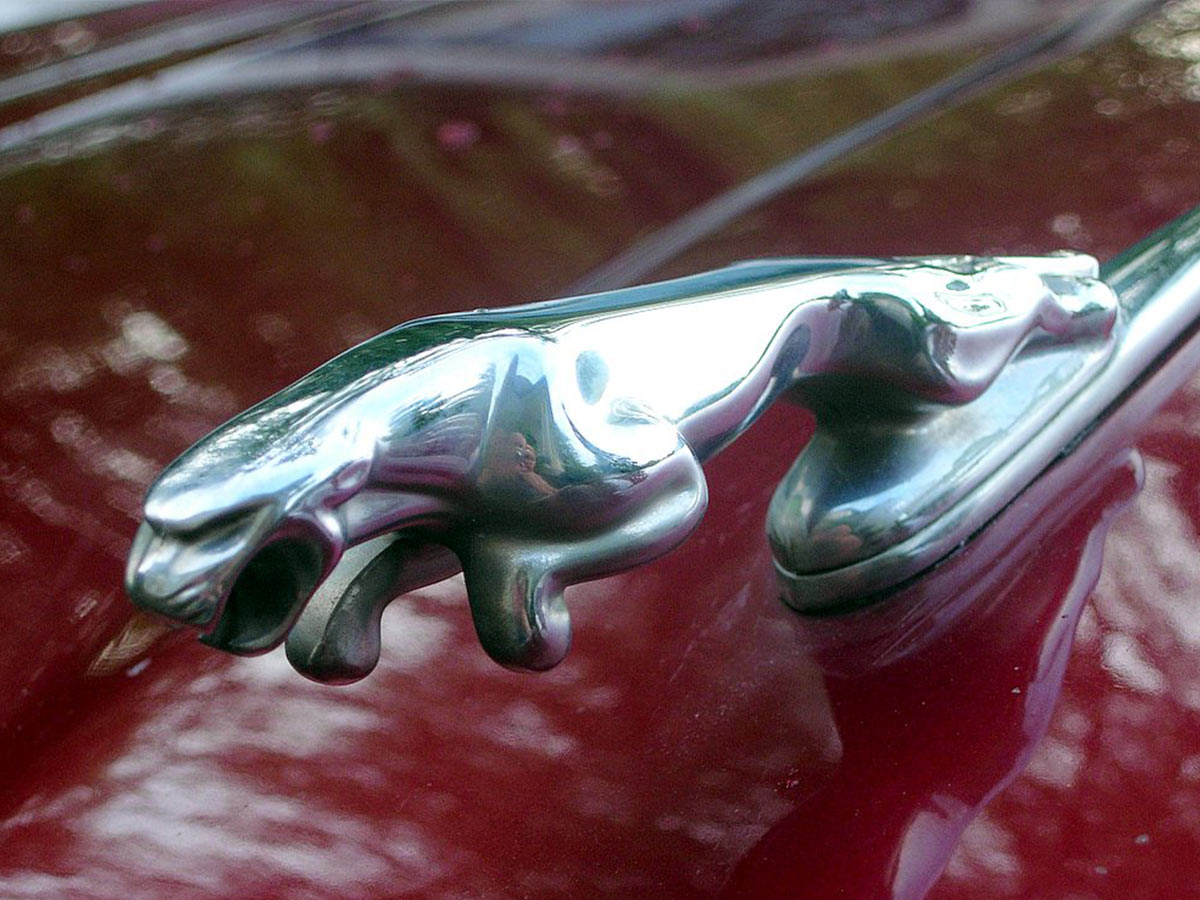
First Introduced: 1911
Last Removed: 2015
Hood ornaments were the ultimate automotive bling, adding a dash of elegance and flair to cars back in the day. More than just shiny decorations, these iconic mascots became symbols of luxury and brand identity, think Rolls-Royce’s graceful Spirit of Ecstasy or Cadillac’s proud crest. They weren’t just about looks; they told a story, showing off a car’s personality before you even turned the key.
But as safety regulations tightened and sleek, aerodynamic designs took over, hood ornaments slowly vanished from modern rides. Sure, today’s cars are safer and smoother, but we can’t help missing that extra sparkle, the little emblem that made luxury feel tangible and made every drive a bit more special. Hood ornaments? Pure classy nostalgia.
Manual Windows
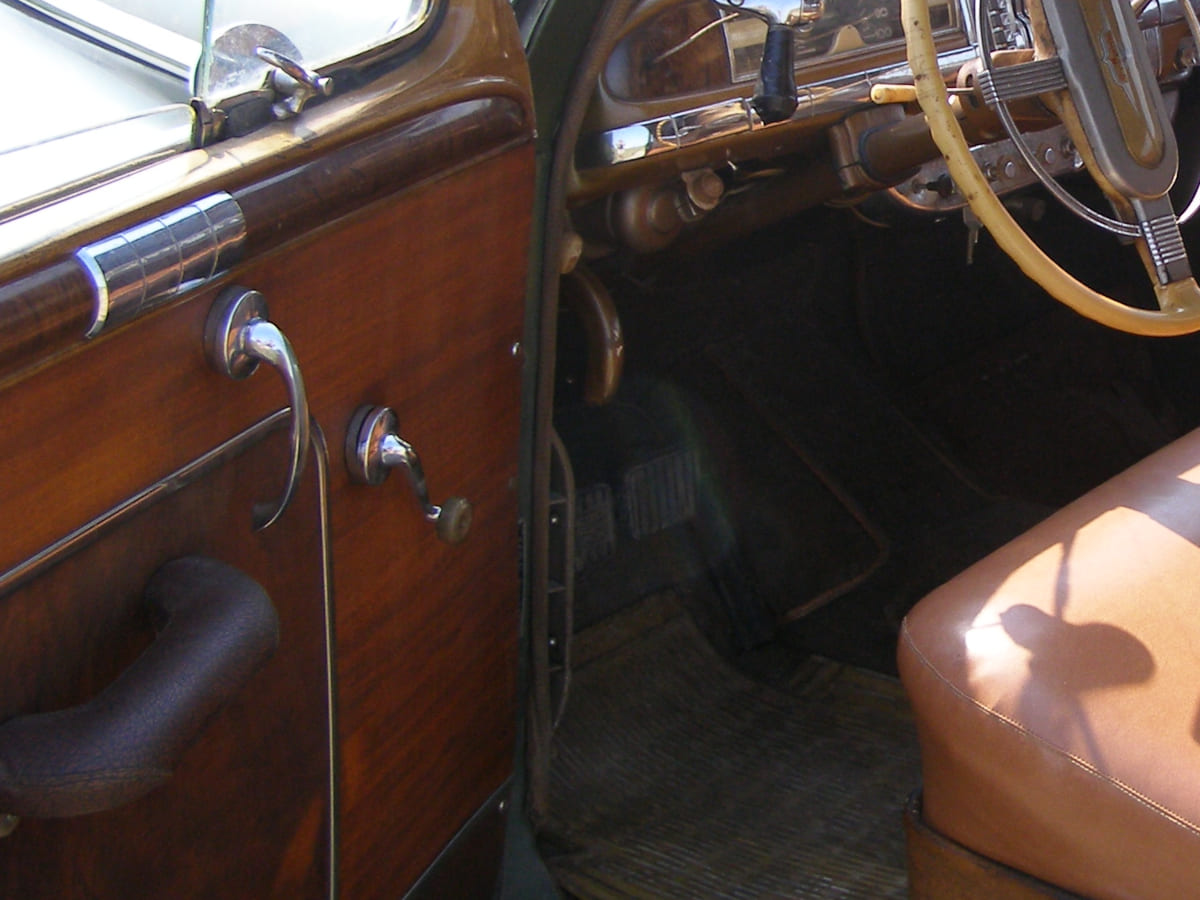
First Introduced: 1920s
Last Removed: 2010s
Manual Windows were a staple in cars for decades, offering simplicity and reliability. They were phased out as power windows became standard due to their convenience and ease of use. The rise of electric windows allowed for smoother operation and more streamlined vehicle design.
Despite the advancement, many drivers still reminisce about manual windows for their hands-on feel and lower maintenance costs. The tactile satisfaction and control offered by manual windows remain a nostalgic reminder of a time when driving was more about engagement with the vehicle.
Vent Wing Windows
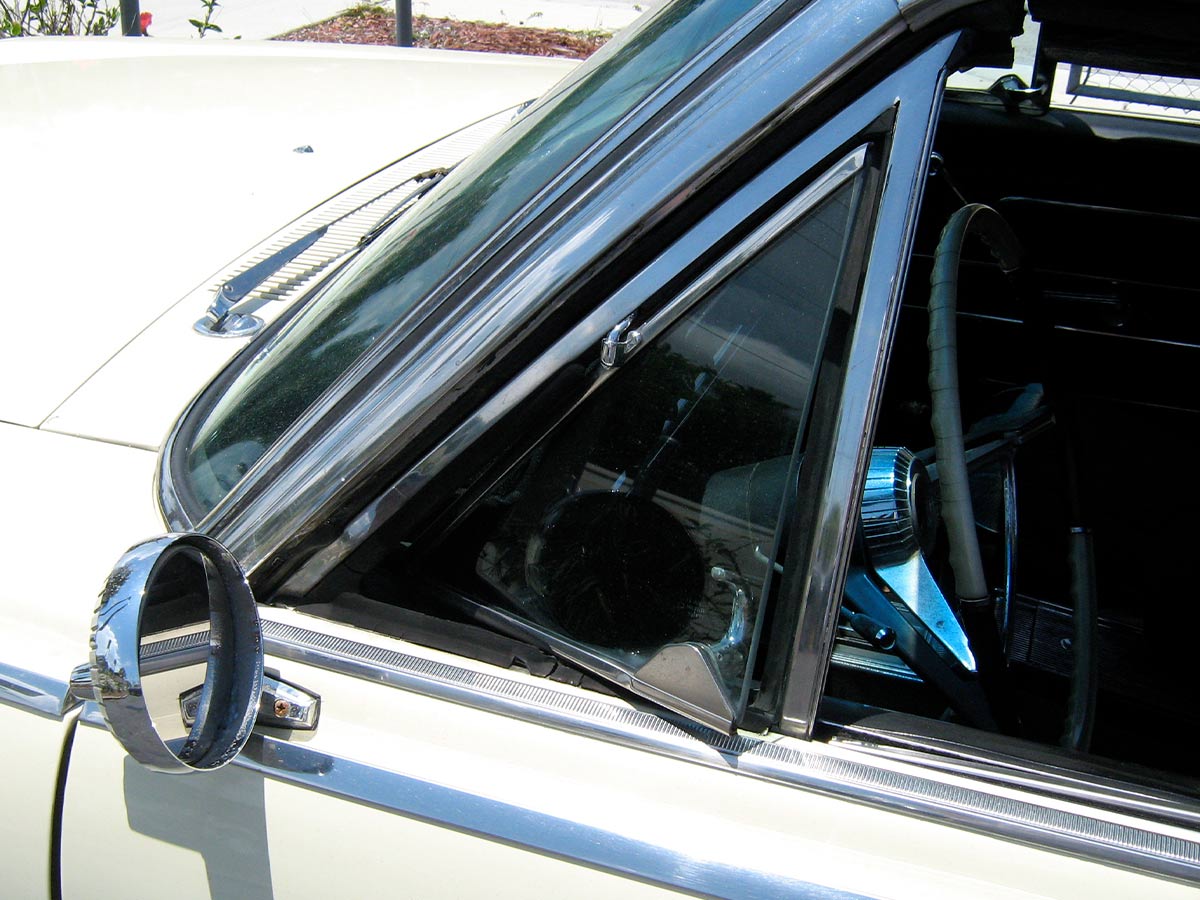
First Introduced: 1933
Last Removed: 1996
Vent wing windows were the unsung heroes of classic car comfort. Those little triangular panes could pivot open independently, letting fresh air in without the noise and buffeting of a full window roll-down. Before air conditioning was everywhere, they were a smart way to get quick ventilation and keep the car cool without blasting the AC or dealing with distracting wind.
Plus, they helped reduce foggy windows and made signaling turns a breeze back in the day. Modern cars traded them for sleek, sealed glass to boost aerodynamics and reduce noise, but we miss that quirky charm and effortless breeze. Sometimes, a little cracked window is all you need for perfect airflow, and vent wing windows nailed that.
Bench Seats
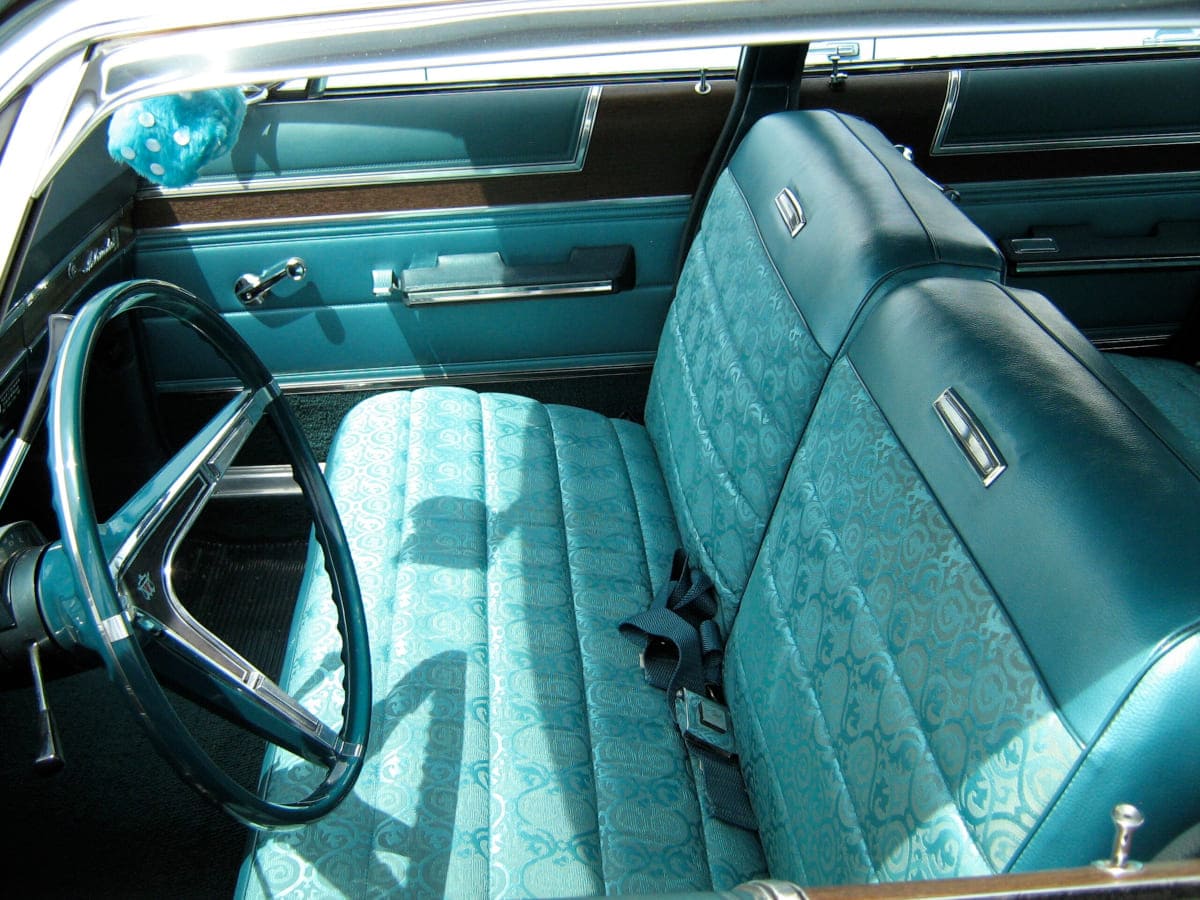
First Introduced: 1900s
Last Removed: 2000s
Bench Seats were once a hallmark of automotive design, providing a spacious, comfortable ride with the charm of a classic car interior. Their decline began as safety regulations and modern design trends shifted focus toward individual seating and more secure, adjustable options.
Bench seats were gradually replaced by bucket seats that offer enhanced safety features and better ergonomics. Despite the advancements, many drivers miss the bench seat for its nostalgic appeal, offering an inviting, open space that encouraged camaraderie and a relaxed driving experience. The warmth of a bench seat evokes memories of simpler times, making its absence feel like a loss of a cherished automotive tradition.
Horn Rings
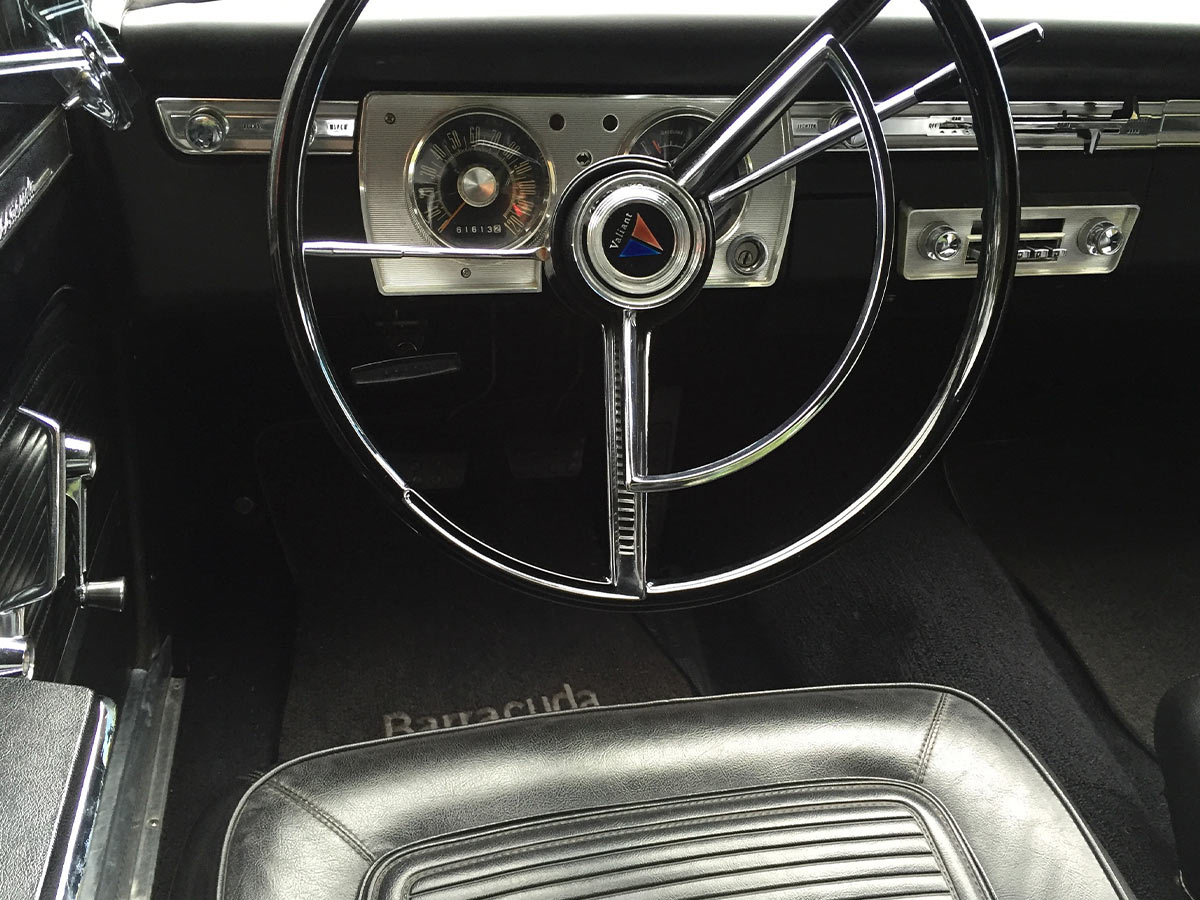
First Introduced: 1939
Last Removed: 1979
Horn rings were the vintage driver’s dream, a stylish, easy way to honk without hunting for a button. These shiny rings circled the steering wheel, letting you sound the horn with just a gentle press anywhere on them. Popular from the ’30s through the ’60s, they weren’t just practical; they added a touch of flair to the dashboard, often chromed or color-matched to match the car’s vibe.
But as steering wheels became more complex with airbags and multifunction buttons, horn rings faded out for safety and convenience. Still, we miss that smooth, satisfying press that made honking feel almost elegant. Horn rings were classic charm wrapped around your steering wheel, simple, stylish, and oh-so-satisfying.
Manual Transmissions
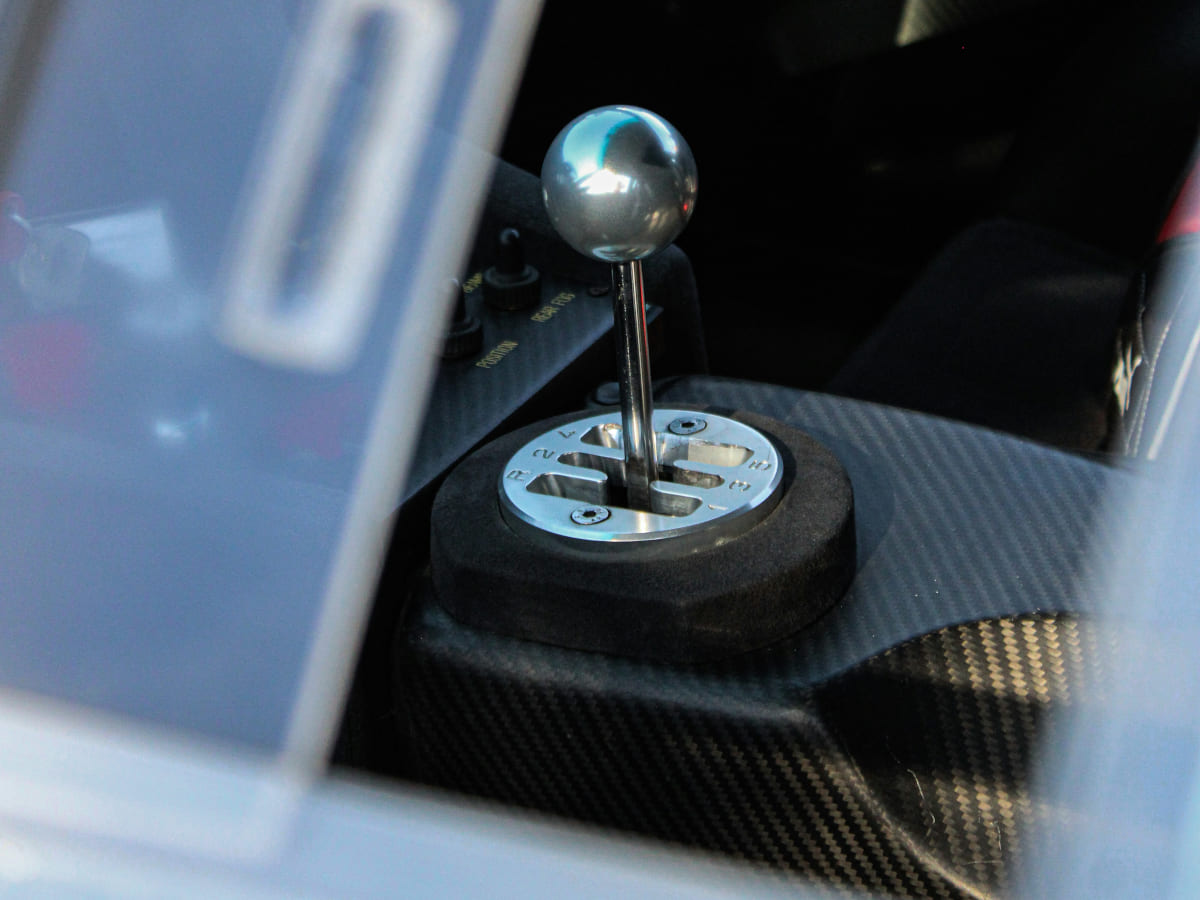
First Introduced: Early 1900s
Last Removed: 2020s
Manual Transmissions were once the standard for driving, prized for their control and engagement. Their decline in the US has been driven by advancements in automatic transmissions that offer improved fuel efficiency and ease of use. Automatics have become prevalent due to their convenience, especially in urban settings with heavy traffic.
However, many enthusiasts still yearn for manual transmissions, valuing the direct connection they provide between driver and vehicle. The skill and engagement required to operate a manual transmission are seen as a form of driving artistry, making its US phased-out status a poignant reminder of driving’s more hands-on and tactile past.
T-Tops
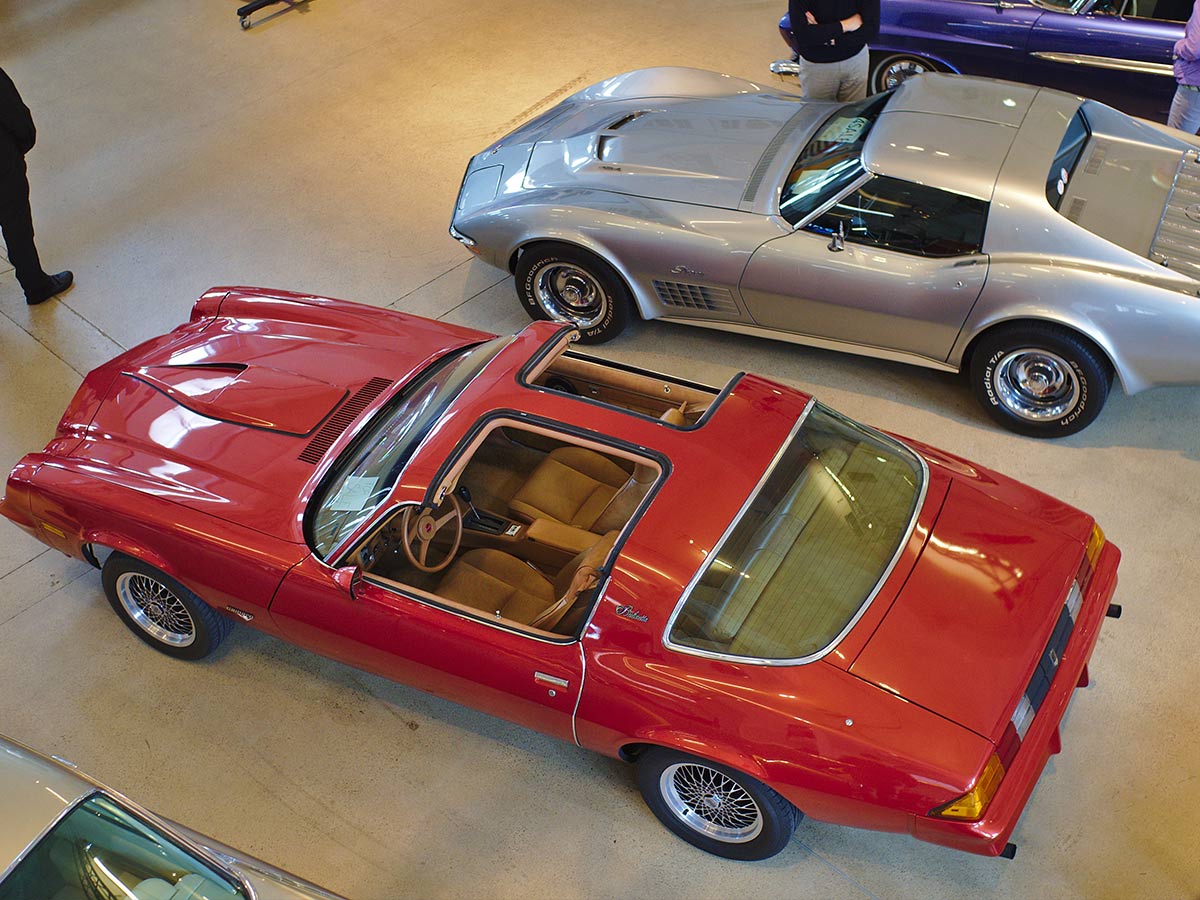
First Introduced: 1968
Last Removed: 2002
T-tops were the perfect middle ground between a hardtop and a convertible, think open-air fun without going full roofless. These removable roof panels, split by a sturdy “T”-shaped bar, gave drivers and passengers the thrill of the breeze and sunshine while keeping the car’s structure solid and secure.
Popular in the ’70s and ’80s muscle and sports cars, T-tops made every drive feel like a mini adventure, flipping from closed to open with a satisfying snap. But as sunroofs got bigger and convertibles more refined, T-tops quietly disappeared. We miss their cheeky charm and the way they let you catch fresh air without the hassle, practical, playful, and just a little bit rebellious.
Built-In Toolkits
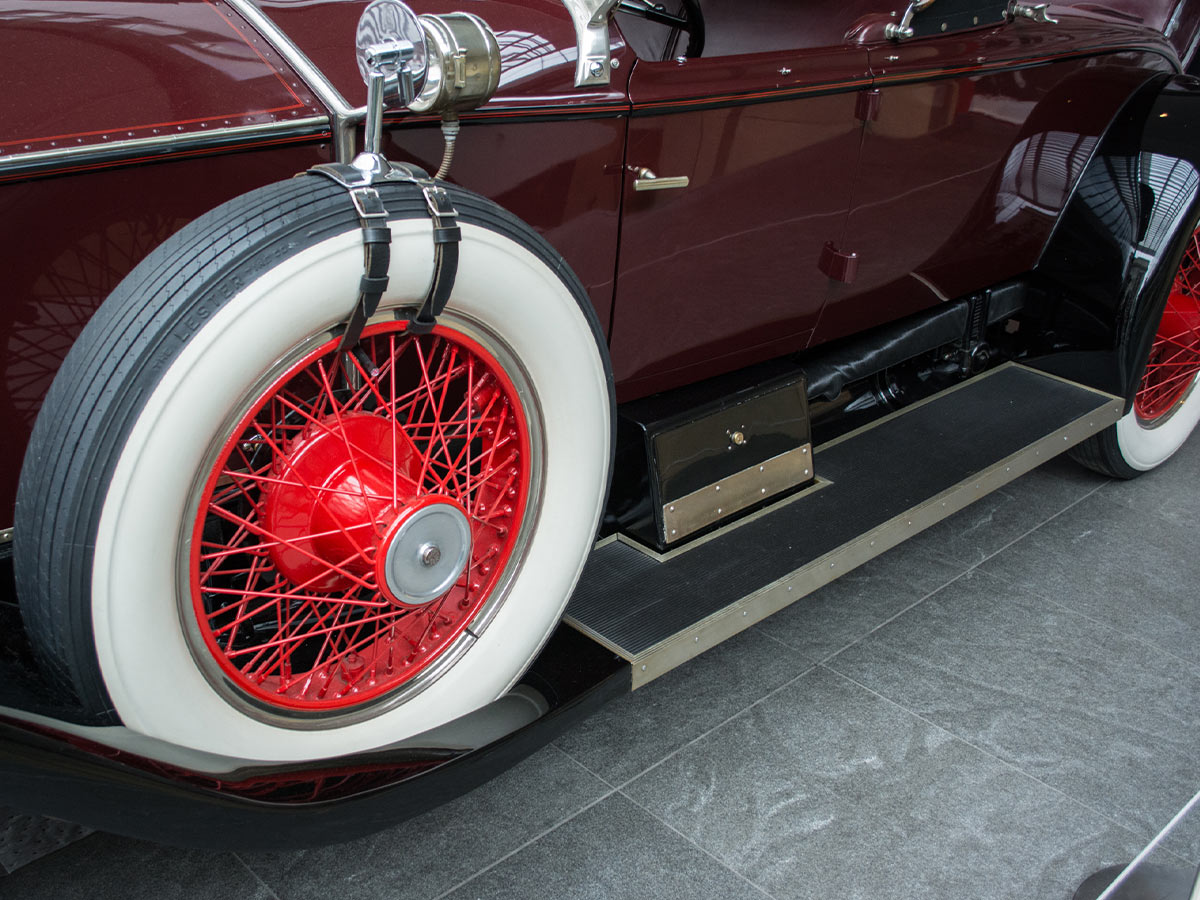
First Introduced: 1920
Last Removed: 1985
Remember when cars came with their own little emergency room? These factory-installed toolkits were like having a mechanic's best friend tucked away in your trunk. We're talking about actual, useful tools, not the flimsy tire iron masquerading as a "toolkit" you get today. These kits included everything from proper wrenches and screwdrivers to fuses and even jumper cables.
When your car broke down on a lonely highway, you weren't completely helpless. You could actually fix basic problems without waiting for AAA or flagging down strangers. Modern cars might be more reliable, but they've also become mysterious black boxes that require computer diagnostics for everything.
Those old toolkits represented automotive self-sufficiency, a time when drivers could be their own heroes, armed with nothing but determination and a decent set of tools.
Push-Button Transmissions
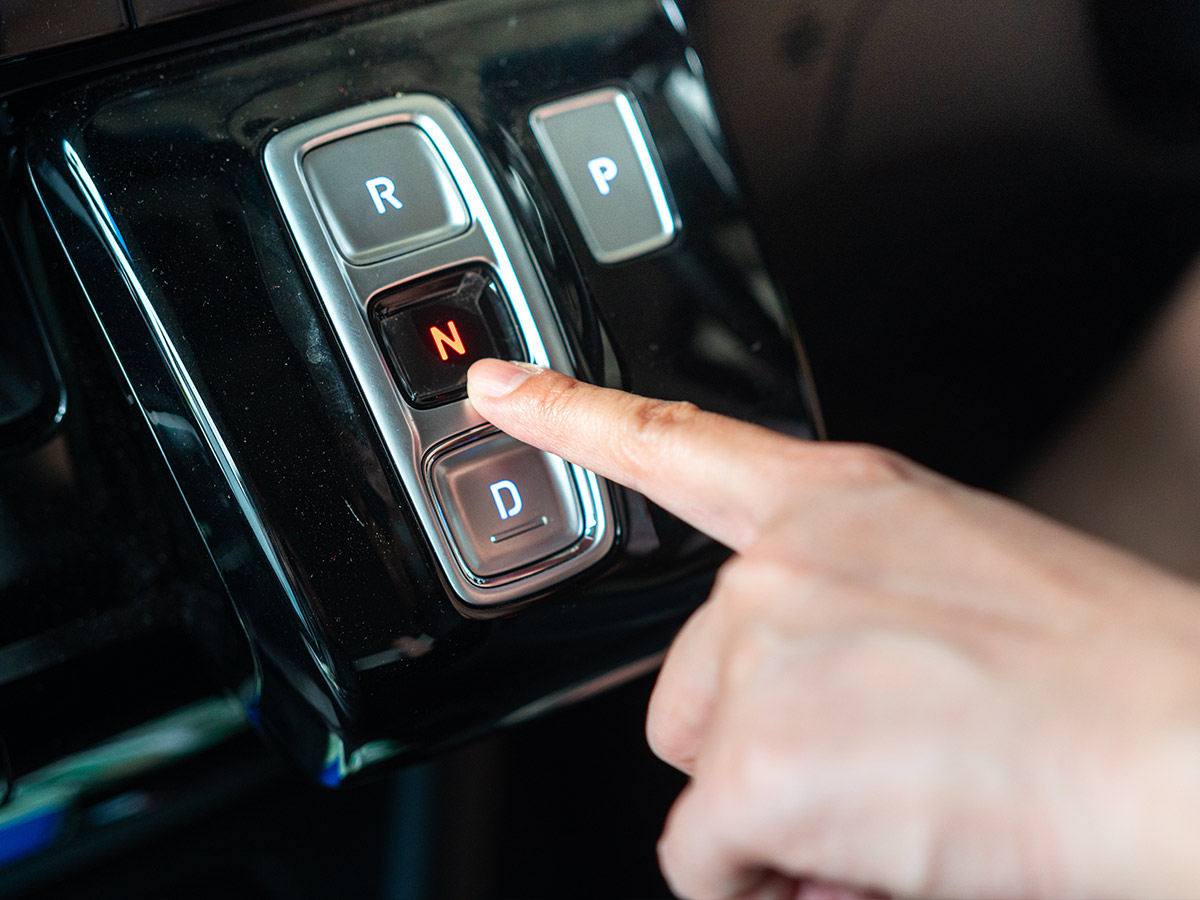
First Introduced: 1956
Last Removed: 1965
Push-button transmissions were like something out of a Jetsons cartoon, a futuristic way to shift gears with just a tap of a button. Popular in the ’50s and ’60s, they made driving feel effortless and cool, turning the dashboard into a cockpit of sorts. Instead of fiddling with a stick or lever, drivers could just press “Drive,” “Reverse,” or “Park” and hit the road.
But as automatic transmissions advanced and safety standards tightened, manufacturers phased out the buttons in favor of traditional shifters that were easier to use and less prone to accidental presses. Still, we miss that sleek, space-age vibe, pushing a button to change gears never felt so Jetsons-cool.
Cassette Players
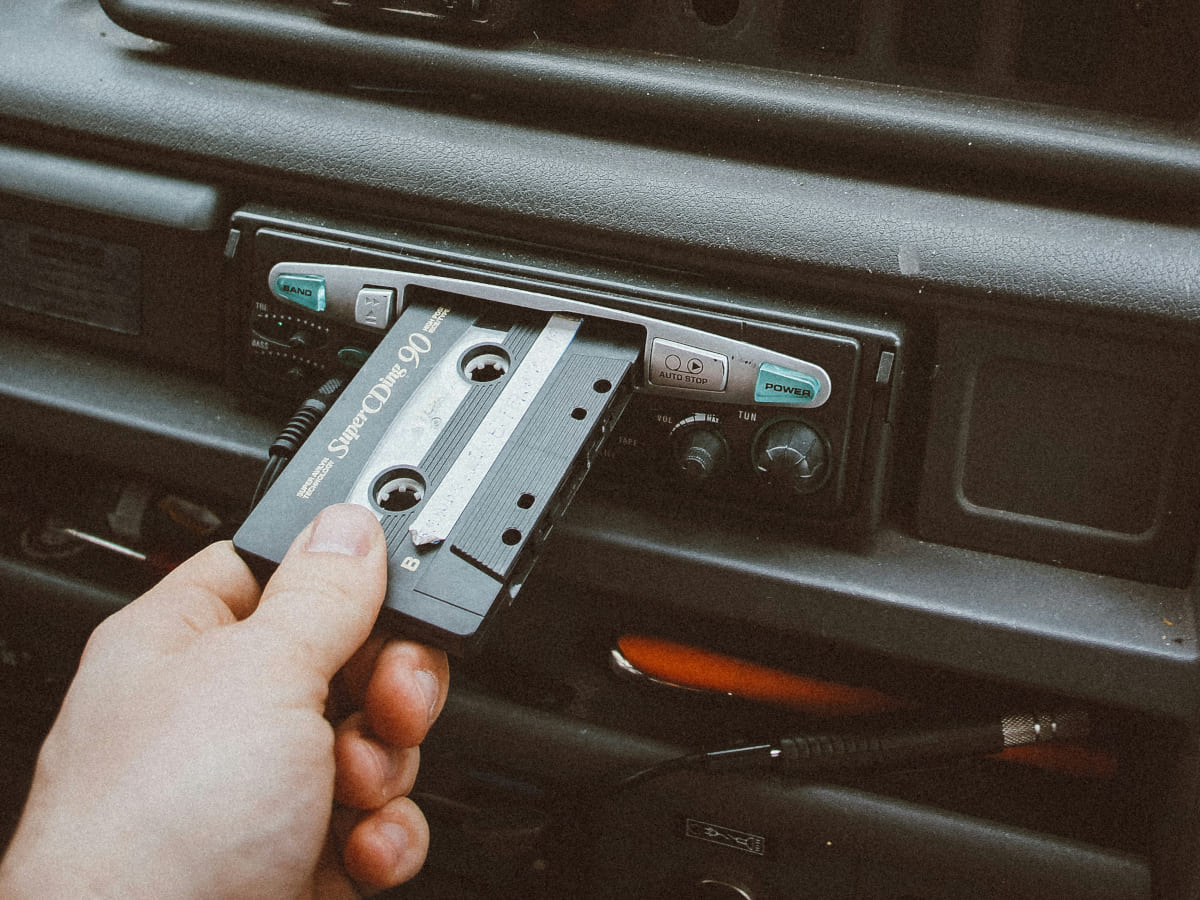
First Introduced: 1960s
Last Removed: 2010s
Cassette Players were a popular feature for decades, offering a portable and personalized music experience. Their decline came with the rise of CDs and digital media, which provided superior sound quality and convenience. As technology evolved, in-car entertainment systems shifted towards more advanced options like MP3 players and streaming services.
Cassette players may be old, but we still love them for the physical experience and the feelings of nostalgia they provide. The physical act of inserting a tape and the distinctive click of the mechanism are cherished memories for many, highlighting the sentimental value of a simpler, analog era in automotive entertainment.
Third Row Rear-Facing Seats in Station Wagons
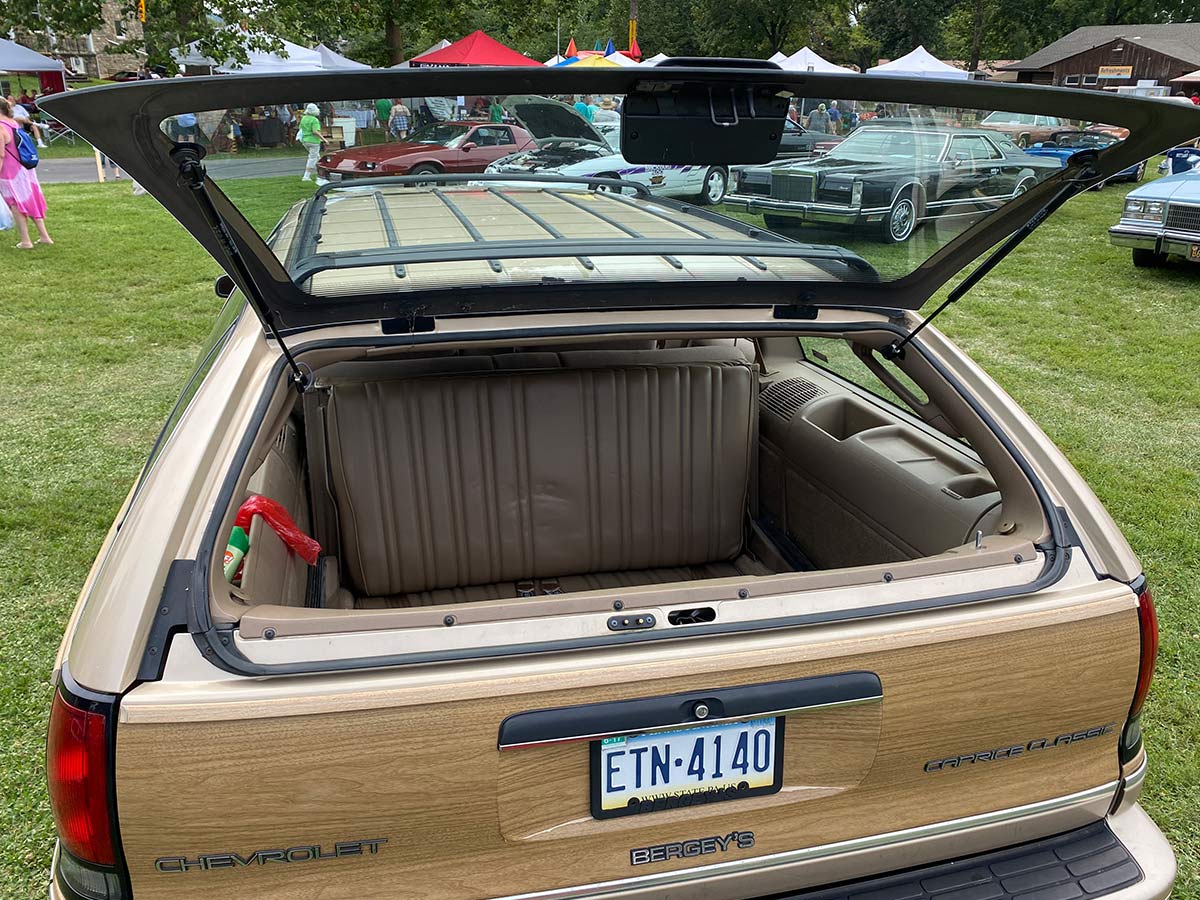
First Introduced: 1957
Last Removed: 1991
Third-row rear-facing seats in station wagons were a family road trip classic. Kids got a unique, fun view of the road behind them, turning every ride into an adventure with the wind in their hair and a perfect spot to spot passing scenery. Popular from the ’40s through the ’70s, these quirky seats made the most of wagon space and gave those “woodie” wagons their iconic charm.
But as safety rules evolved and SUVs took over, rear-facing seats disappeared in favor of forward-facing ones with better protection. We miss those cozy, backward-facing benches where family trips felt extra special, packed with nostalgia, stories, and plenty of playful sibling banter.
Crank Vent Windows
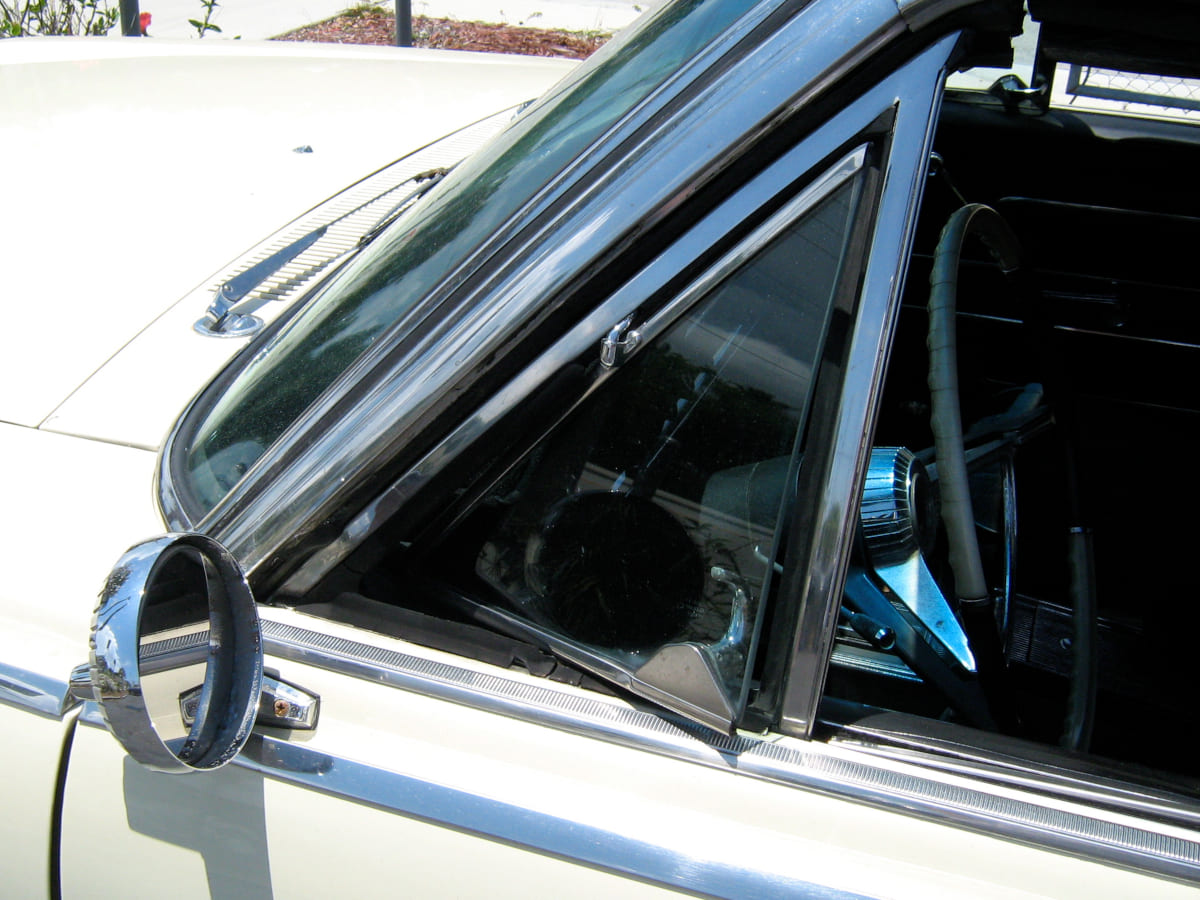
First Introduced: 1920s
Last Removed: 1990s
Crank Vent Windows were once common, allowing drivers and passengers to control cabin airflow manually with a simple little handle. Their decline resulted from advancements in air conditioning and automatic ventilation systems, which provided more precise and comfortable climate control. As cars became more sophisticated, the practicality of crank vents diminished, replaced by integrated systems offering greater convenience.
The simple design and tactile experience provided by crank vent windows will live on in our memories long after they have vanished. They make you long for the simpler, more mechanical days of driving, when you were more intimate with the controls of your automobile or they may invoke that fond memory of childhood, either way, we miss them together.
Glass Headlights
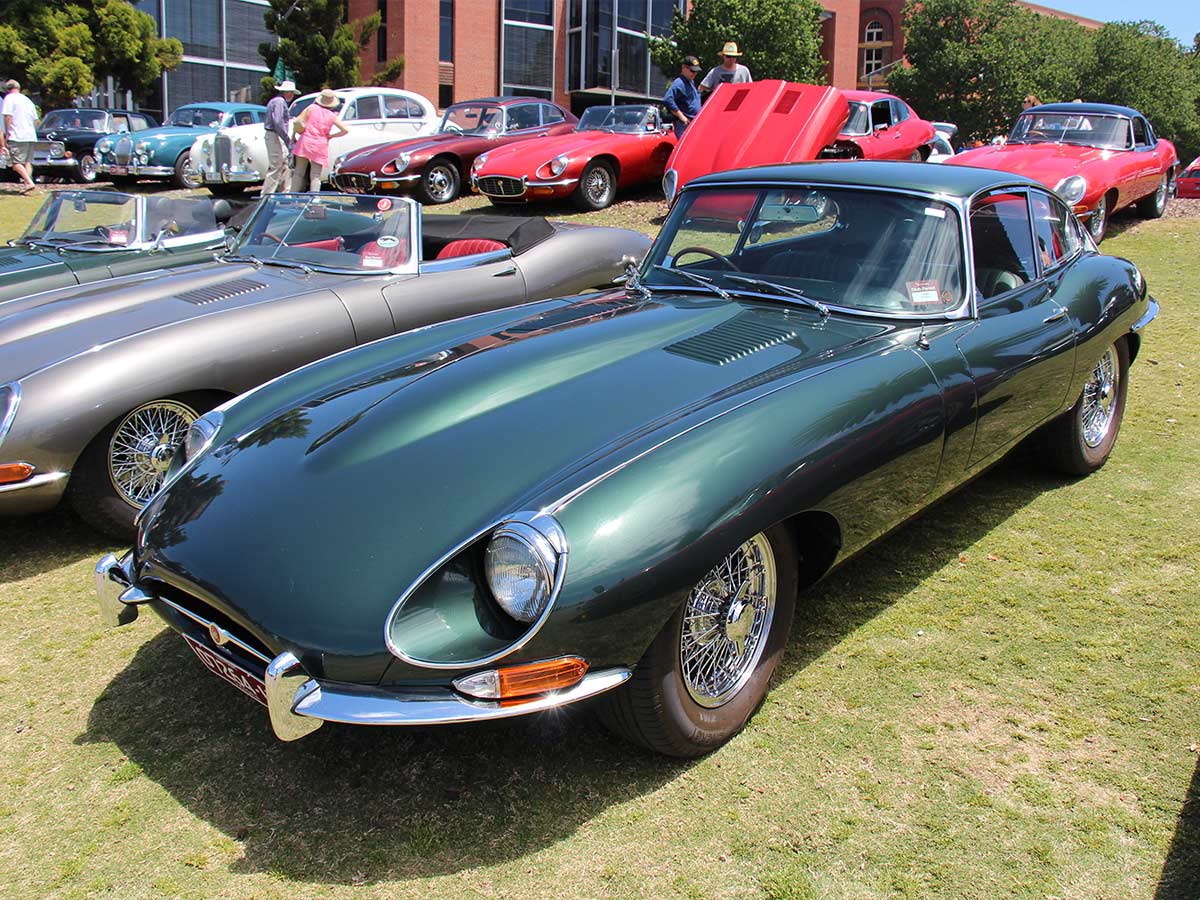
First Introduced: 1940
Last Removed: 2004
Glass headlights were the tough, crystal-clear guardians of the road. Unlike today’s plastic lenses that can yellow, haze, or scratch over time, glass headlights stayed durable and scratch-resistant, keeping your beam sharp and bright for years. Back in the day, they were the go-to choice, combining function with a classic, polished look.
Modern plastic headlights are lighter and easier to mold into sleek shapes, but we miss that clarity and longevity glass offered, plus, glass just had that satisfying old-school feel. Sometimes, the classics really do shine brighter, and those glass headlights lit the way with style and durability that modern plastic just can’t quite match.
Full-Size Spare Tires
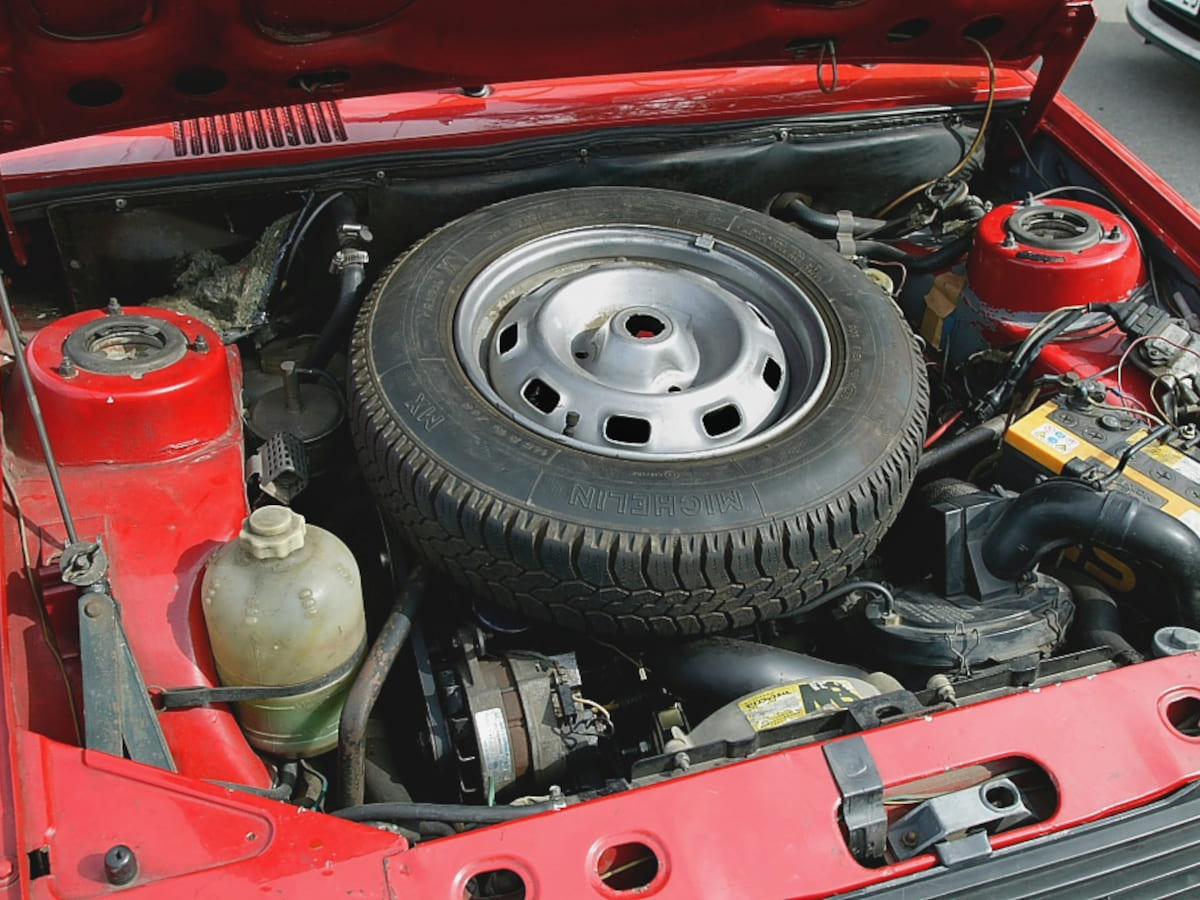
First Introduced: 1900s
Last Removed: 2010s
Full-Size Spare Tires were once a standard feature, offering a complete replacement for any flat tire on the go. Their decline was driven by the rise of compact spares and run-flat tires, which saved space and reduced vehicle weight. Additionally, advancements in tire repair kits and inflation systems provided more convenient solutions for dealing with flats.
While full-size spares are valued for their reliability and the peace of mind they offer, they have largely been replaced by modern alternatives that prioritize efficiency and storage space. The full-size spare remains a nostalgic symbol of automotive preparedness, representing a time when drivers valued having an exact match for their vehicle’s tires.
Column Shifters
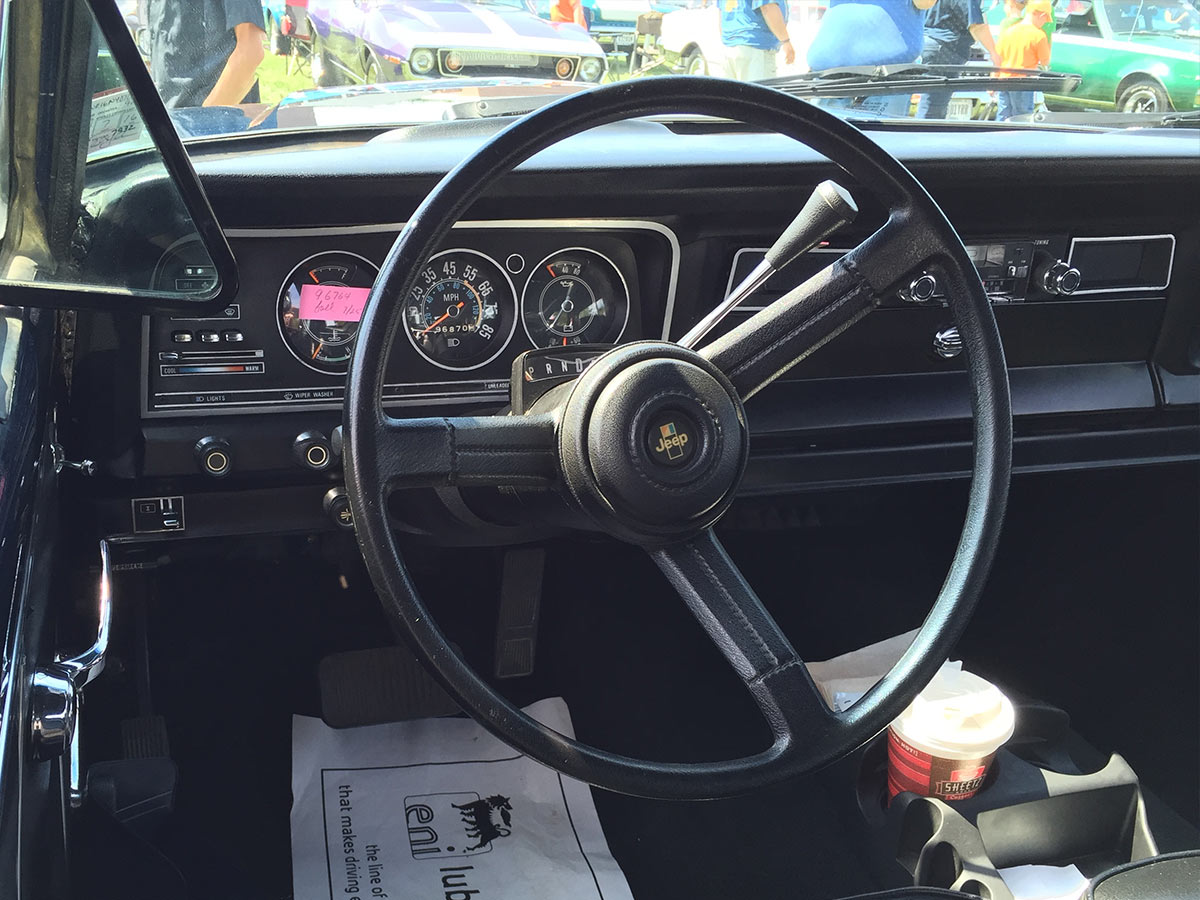
First Introduced: 1938
Last Removed: 2021
Column shifters were the space-saving MVPs of classic cars, freeing up room on the floor so you could squeeze in a roomy bench seat up front. This setup turned the whole front row into one big cozy lounge, perfect for cruising with friends or family.
Shifting gears with a flick on the steering column also gave driving a distinct, old-school rhythm that’s missing from today’s console-dominated interiors. Though floor shifters took over for sportier, ergonomic reasons, we miss the effortless charm of column shifters, the way they made driving feel a little more connected and, honestly, just a bit cooler. Classic cars just don’t make them like that anymore.
Ashtrays and Lighters
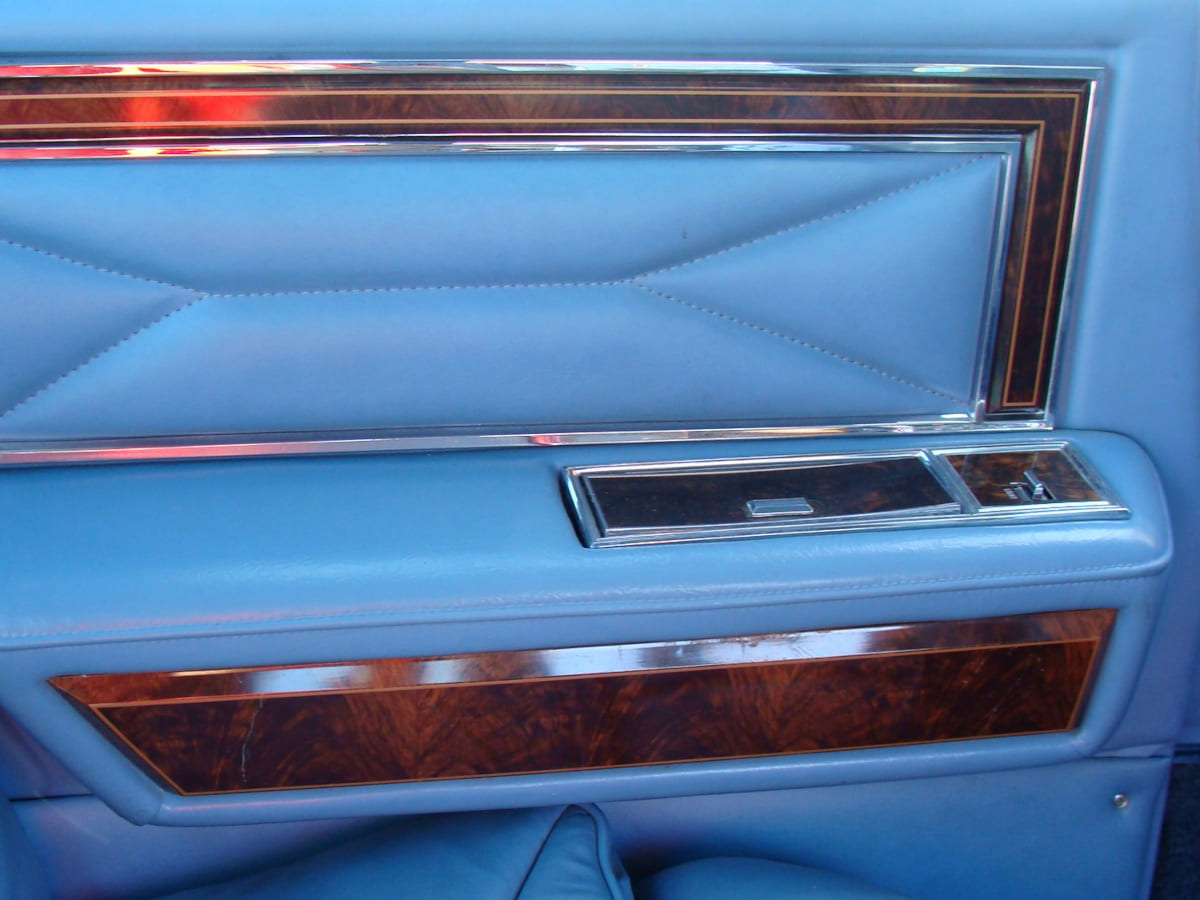
First Introduced: 1920s
Last Removed: 2010s
Ashtrays and Lighters were standard features in many cars, catering to the smoking habits of past decades. Their decline mirrors the reduced prevalence of smoking and heightened awareness of health and fire safety. Modern vehicles have shifted focus toward amenities that align with current lifestyle preferences, such as built-in USB ports and advanced infotainment systems.
Ashtrays and lighters may be out of style now, but they nevertheless have sentimental significance since they remind us of a bygone era when smoking in cars was normal and acceptable. They evoke memories of simpler times and a different approach to in-car comfort and convenience, reflecting changes in both social habits and automotive design.
Pull Knob Headlight Switches
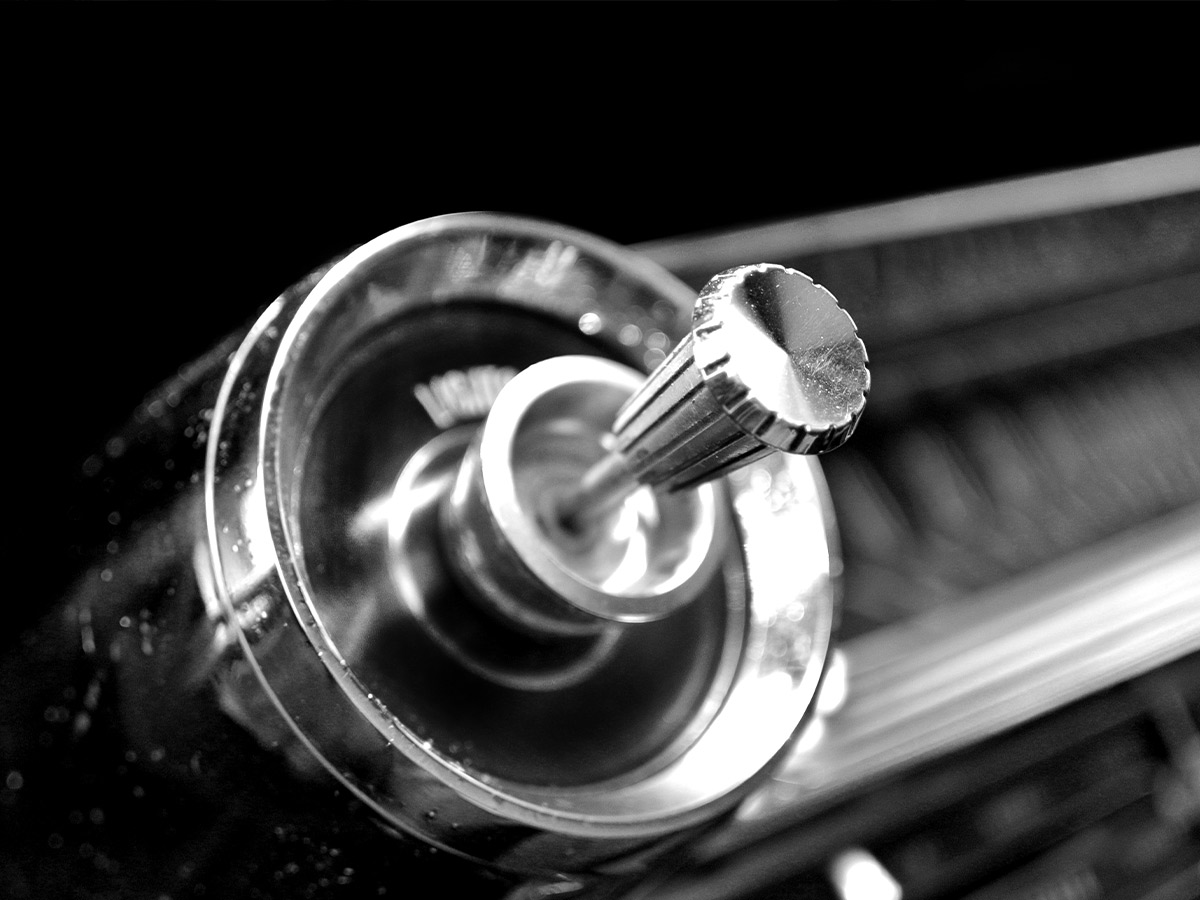
First Introduced: 1930
Last Removed: 1975
Pull knob headlight switches were delightfully simple, just a satisfying pull to turn on your lights, and a twist or push to dim or flash. No fancy sensors or automatic gimmicks, just pure, tactile control that made you feel like you really owned your car.
They were straightforward, reliable, and kind of cool in that “I’m driving a classic” way. Nowadays, automatic headlights take over, but we miss that hands-on charm, the little ritual of flicking and pulling a knob that made turning on your headlights feel like a mini driving ceremony. Sometimes, simpler really is better, and pull knobs had style and substance in one twist.
Hood Ornaments

First Introduced: 1920s
Last Removed: 2000s
Hood Ornaments were once a hallmark of automotive elegance, or hilarity, adding a touch of personal style or prestige to vehicles. Their decline was driven by safety regulations and the increasing focus on aerodynamic efficiency, which led to the integration of ornaments into the vehicle’s design rather than protruding elements. Modern cars prioritize streamlined aesthetics and safety, reducing the risk of injury from protruding objects.
Despite their disappearance, hood ornaments are cherished for their artistic and historical significance, representing an era when cars were as much about luxury and individual expression as they were about performance. Their absence is a reminder of the changing values in automotive design and safety.
Steel Bumpers
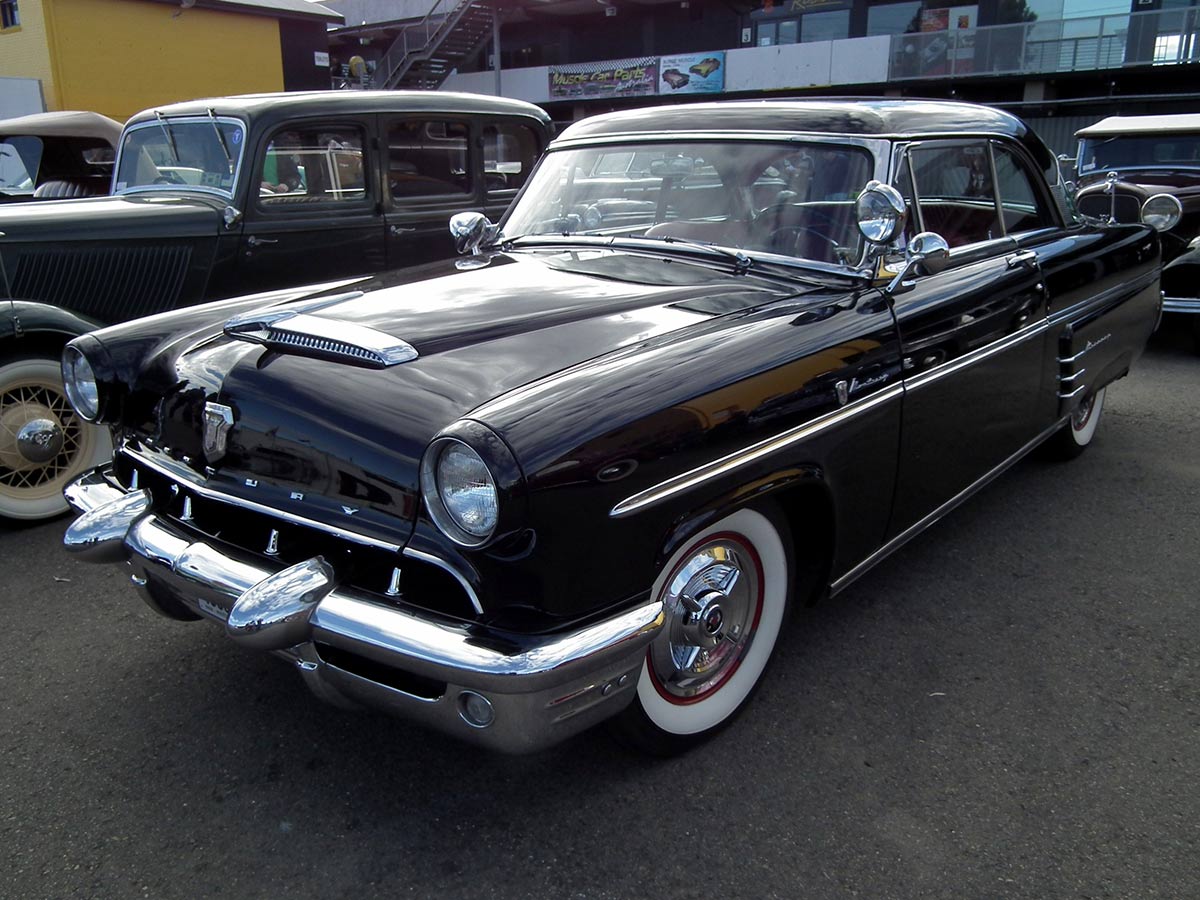
First Introduced: 1910
Last Removed: 1995
Steel bumpers were the tough guys of the car world, heavy, durable, and built to take a hit. Unlike today’s plastic-covered bumpers designed more for looks and pedestrian safety, steel bumpers offered serious protection in minor collisions, saving cars (and wallets) from dents and damage.
They had a rugged, industrial charm, often polished to a shiny mirror finish that gave classic cars a bold, confident look. While modern bumpers prioritize crumple zones and airbags, we miss the reassuring solidity of steel, those bumpers that felt like a real shield, not just a fashion statement. Steel bumpers weren’t just functional; they were a badge of strength on every vintage ride.
Analog Gauges
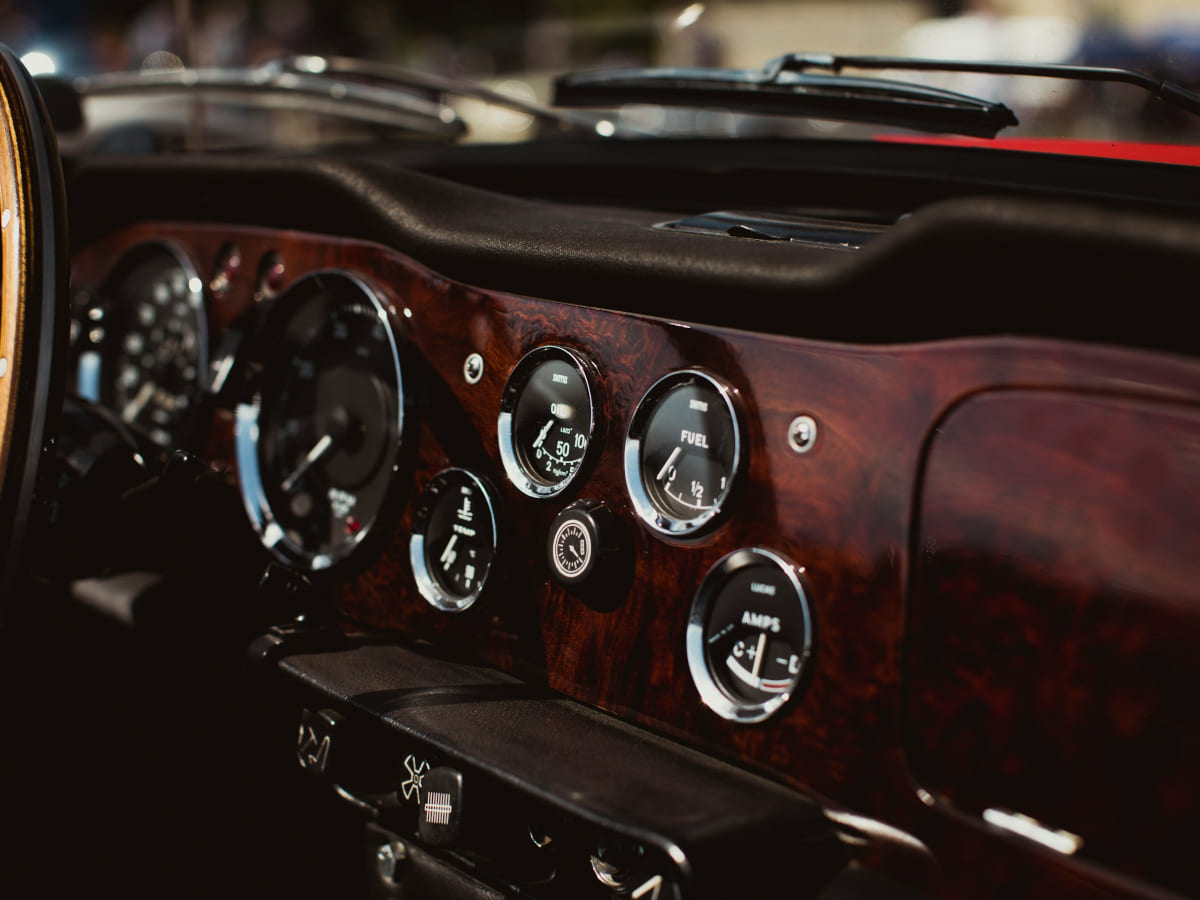
First Introduced: Early 1900s
Last Removed: 2010s
Analog Gauges were integral to vehicle dashboards, providing drivers with direct, real-time readings of speed, fuel levels, and engine temperature. Their decline began as digital displays and advanced electronic instrumentation offered greater accuracy, customization, and integration with other vehicle systems. Digital screens can present a broader range of information and adapt to various driving conditions, making them a preferred choice for modern vehicles.
Nevertheless, analog gauges are fondly remembered for their classic aesthetic and tactile feedback, evoking nostalgia for a time when driving was closely tied to straightforward, mechanical instruments. Their simplicity and charm continue to resonate with enthusiasts who appreciate the tangible connection to a vehicle’s performance.
Handbrake Levers
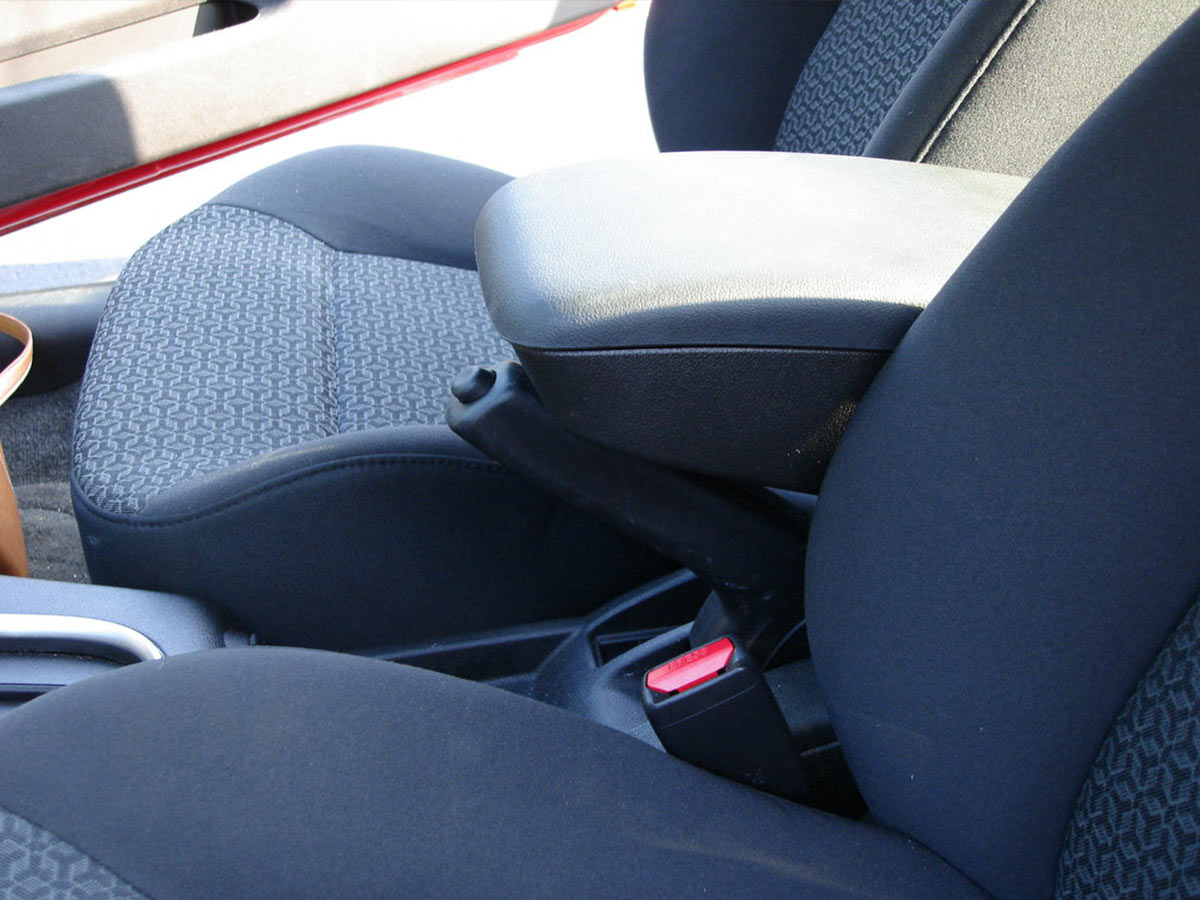
First Introduced: 1910
Last Removed: 2020
Handbrake levers were the driver’s trusty sidekick, offering precise control in emergencies and making parking on hills a breeze. Especially beloved by manual transmission drivers, they doubled as tools for cool driving moves like drifting or a quick getaway.
Unlike today’s electronic parking brakes that often feel like guessing games, handbrake levers gave you tactile feedback and confidence when you pulled that lever. Sure, tech has made parking easier in some ways, but we miss the raw control and old-school skill handbrake levers demanded. They were more than just a safety tool, they were a driver’s connection to the car and the road.
Retractable Antennas
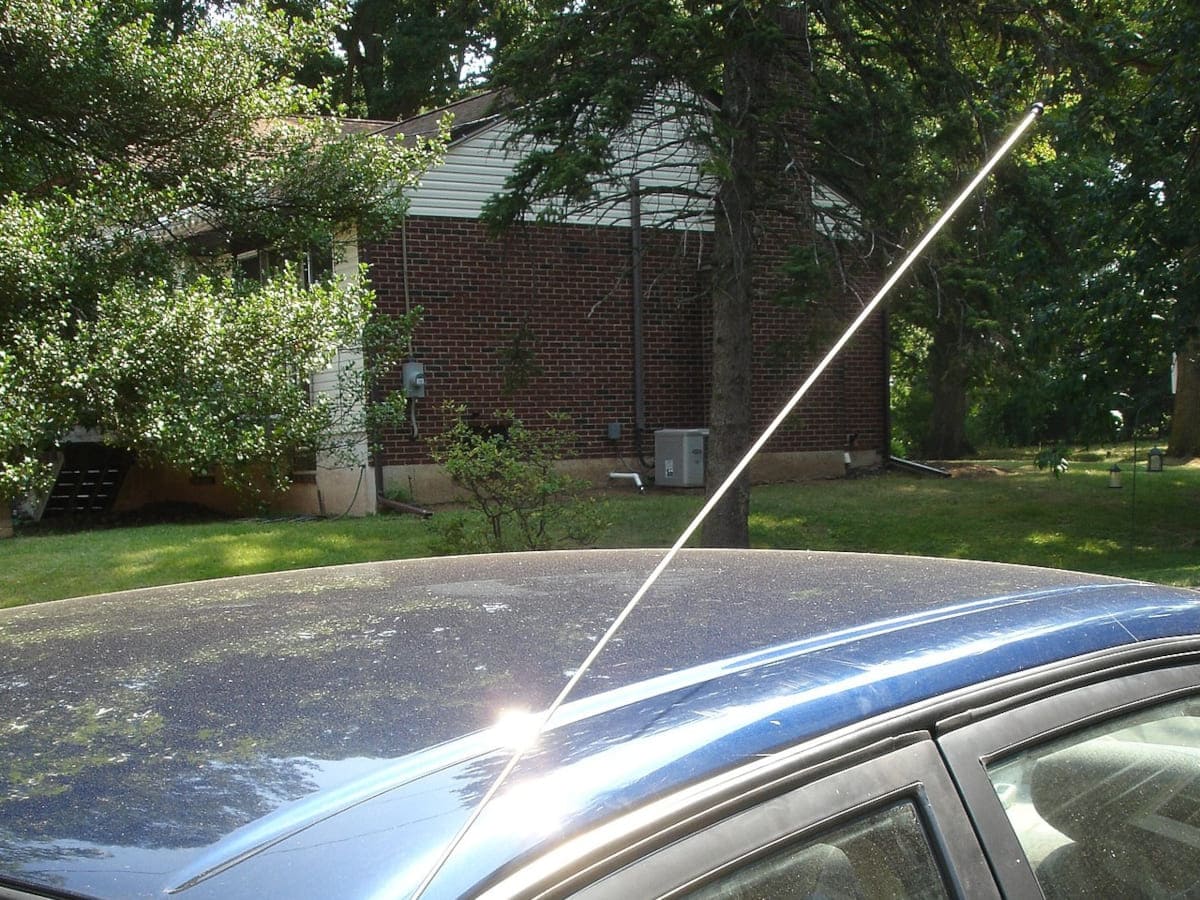
First Introduced: 1950s
Last Removed: 2010s
Retractable Antennas were a stylish and functional feature, providing improved radio reception while folding away to maintain a sleek vehicle profile. Their decline was driven by the advent of integrated, fixed antennas and satellite radio, which offer better reception and eliminate the need for external components.
As vehicles evolved towards more streamlined designs and advanced technology, retractable antennas became less practical. Despite their obsolescence, they remain a nostalgic element of classic car design, symbolizing a time when engineering solutions combined functionality with visual appeal. Their absence highlights the shift towards modern, seamless integration of technology into automotive design.
Split Windshields
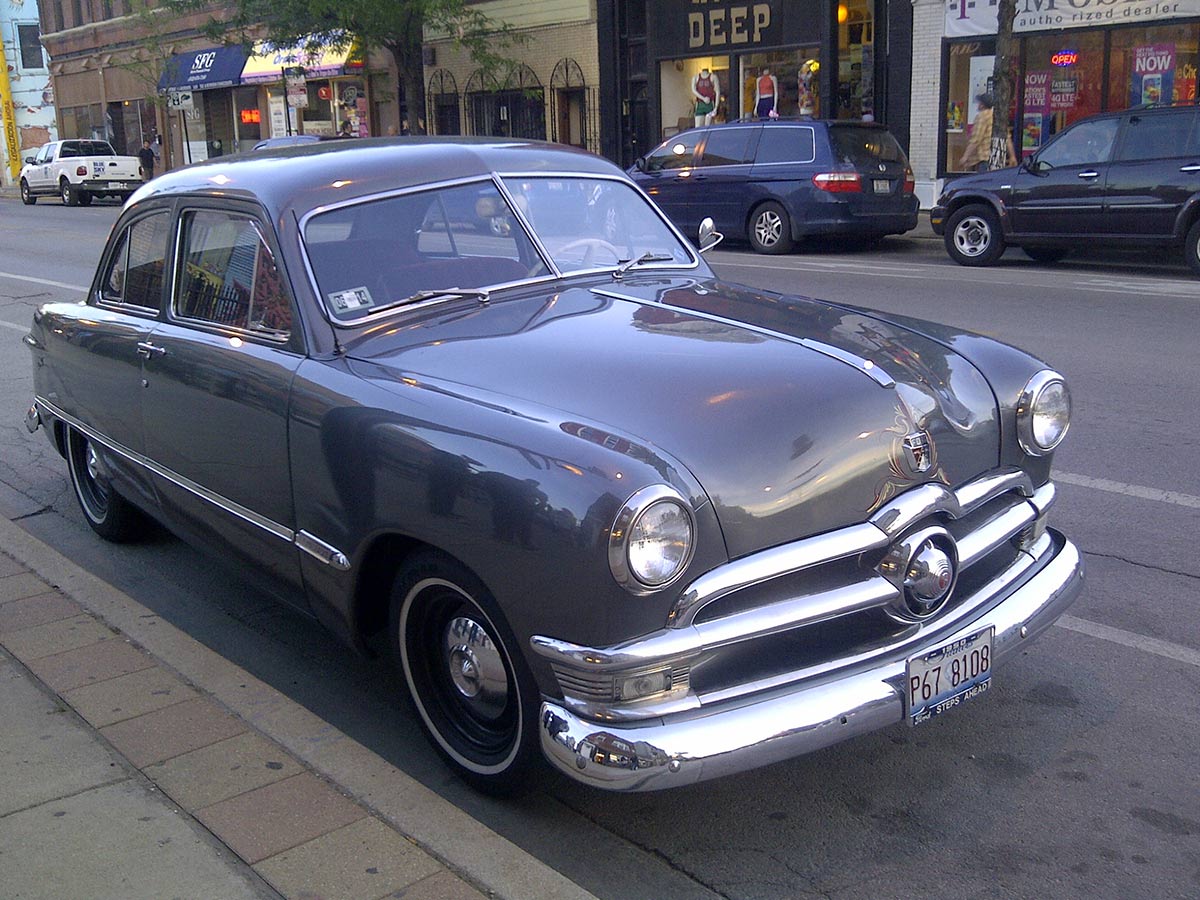
First Introduced: 1934
Last Removed: 1966
That distinctive center divider running down the middle of your windshield wasn't just a design quirk, it was pure automotive elegance. Split windshields gave classic cars an unmistakable character that screams "I'm cooler than your modern sedan."
Beyond the vintage charm, they were actually practical too. If one side cracked, you could replace just half the windshield instead of the whole thing, saving money and keeping you on the road.
The split also provided structural support and gave drivers a unique perspective on the world ahead. Sure, that center post could obstruct your view slightly, but it was a small price to pay for looking absolutely magnificent.
Modern one-piece windshields might offer clearer visibility, but they'll never capture that timeless, sophisticated appeal of a proper split windshield that made every drive feel like a scene from a classic movie.
Tailfins
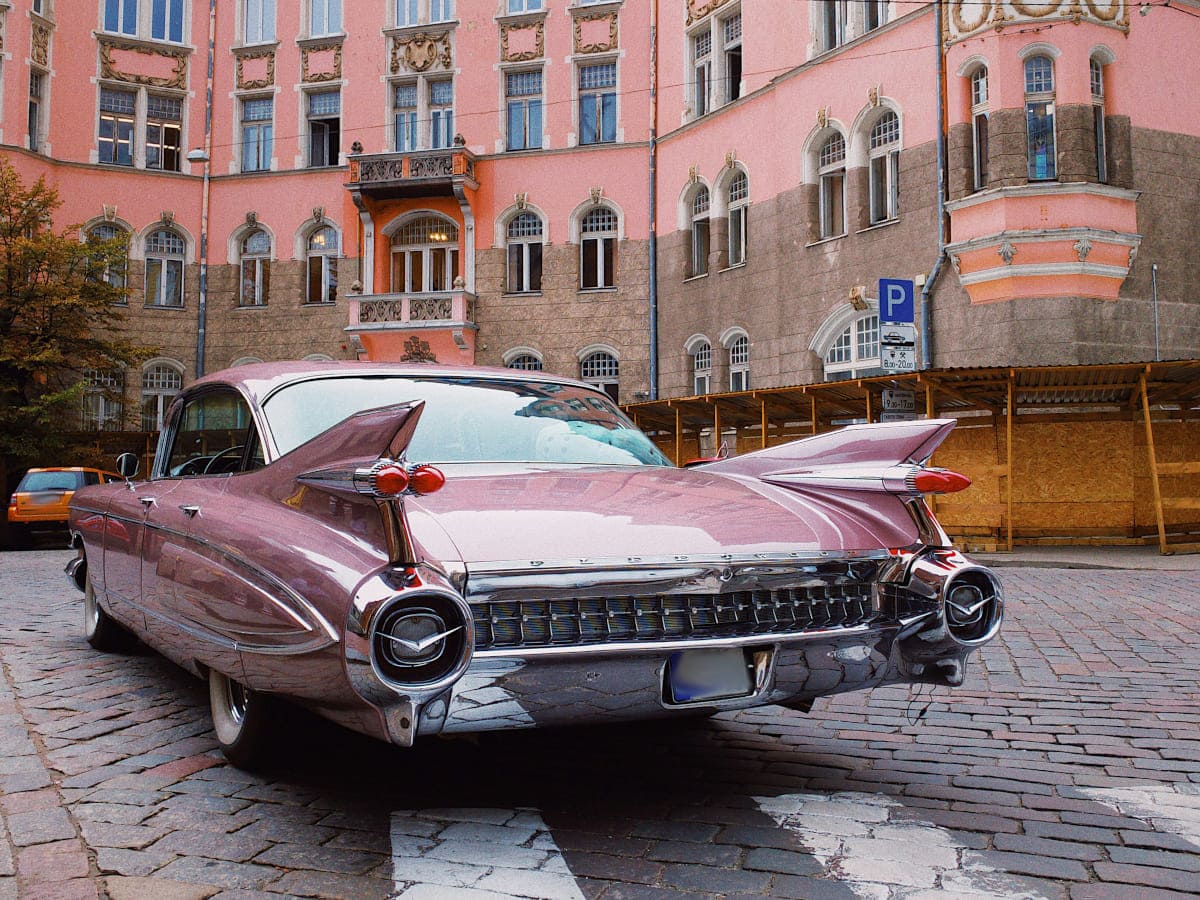
First Introduced: 1948
Last Removed: 1960s
Tailfins were a defining feature of mid-20th-century automotive design, giving cars a futuristic and distinctive look. Their decline was influenced by changing design trends and evolving safety standards that prioritized aerodynamics and practicality over aesthetic flair. As the automotive industry moved towards sleeker, more streamlined shapes, the flamboyant tailfins fell out of favor.
Even though they are no longer made, tailfins are nonetheless cherished as symbols of a time when daring and inventive design were prevalent. They evoke a sense of nostalgia for a time when cars were not just vehicles but statements of style and innovation, reflecting a unique period in automotive history.
Stationary Headrests
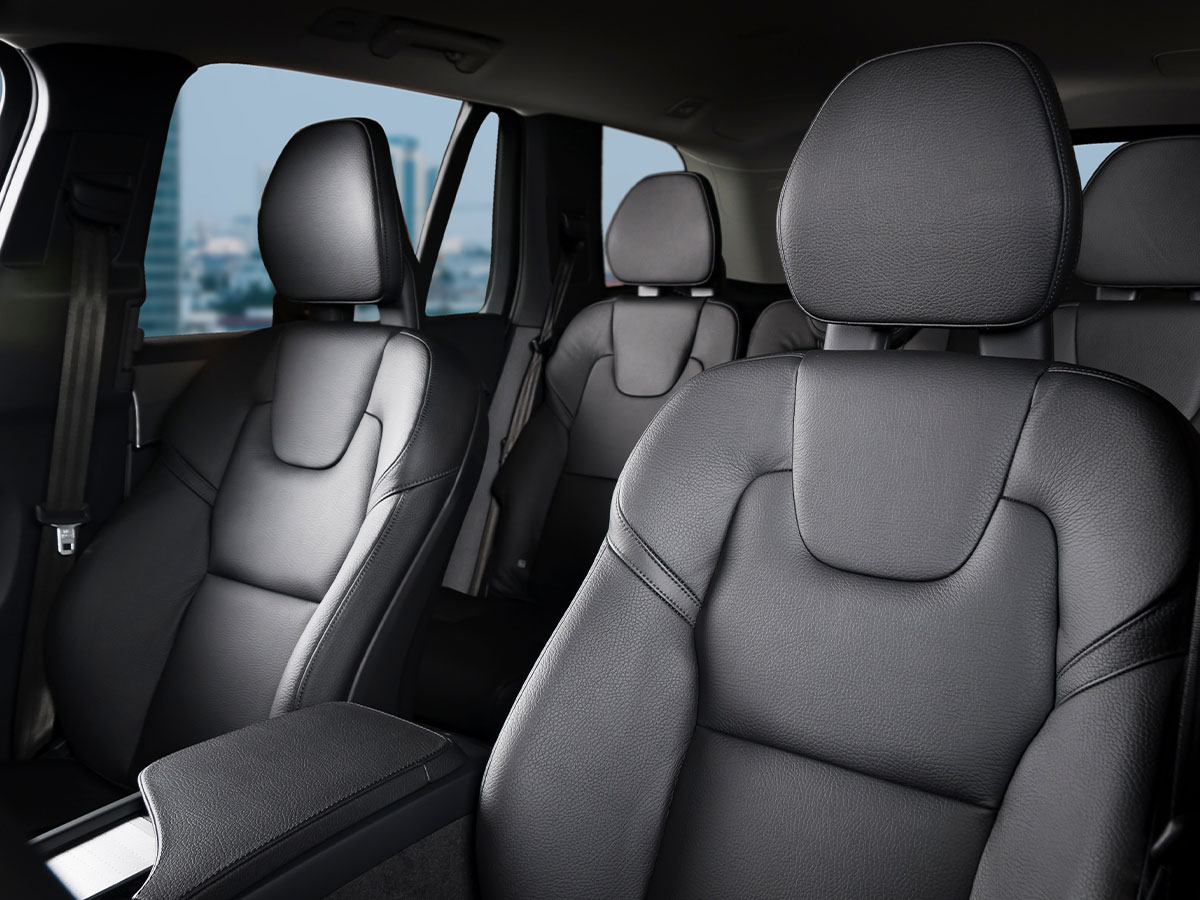
First Introduced: 1950
Last Removed: 1985
Those non-adjustable headrests weren't just stubborn pieces of upholstery, they were design masterpieces that knew their place. Unlike today's adjustable contraptions that stick up like periscopes and block your rear view, stationary headrests were seamlessly integrated into the seat's silhouette. They created clean, uninterrupted lines that made car interiors look sophisticated and purposeful.
Sure, they weren't customizable for every passenger's neck height, but they didn't need to be, they were positioned just right for the average driver and looked fantastic doing it. Modern adjustable headrests might be safer and more ergonomic, but they've turned our back seats into obstacle courses for rearview mirror visibility.
Those old stationary ones understood that sometimes the best design is the one that doesn't try to be everything to everyone, just elegant, functional, and beautifully understated.
Classic Two-Door Coupes
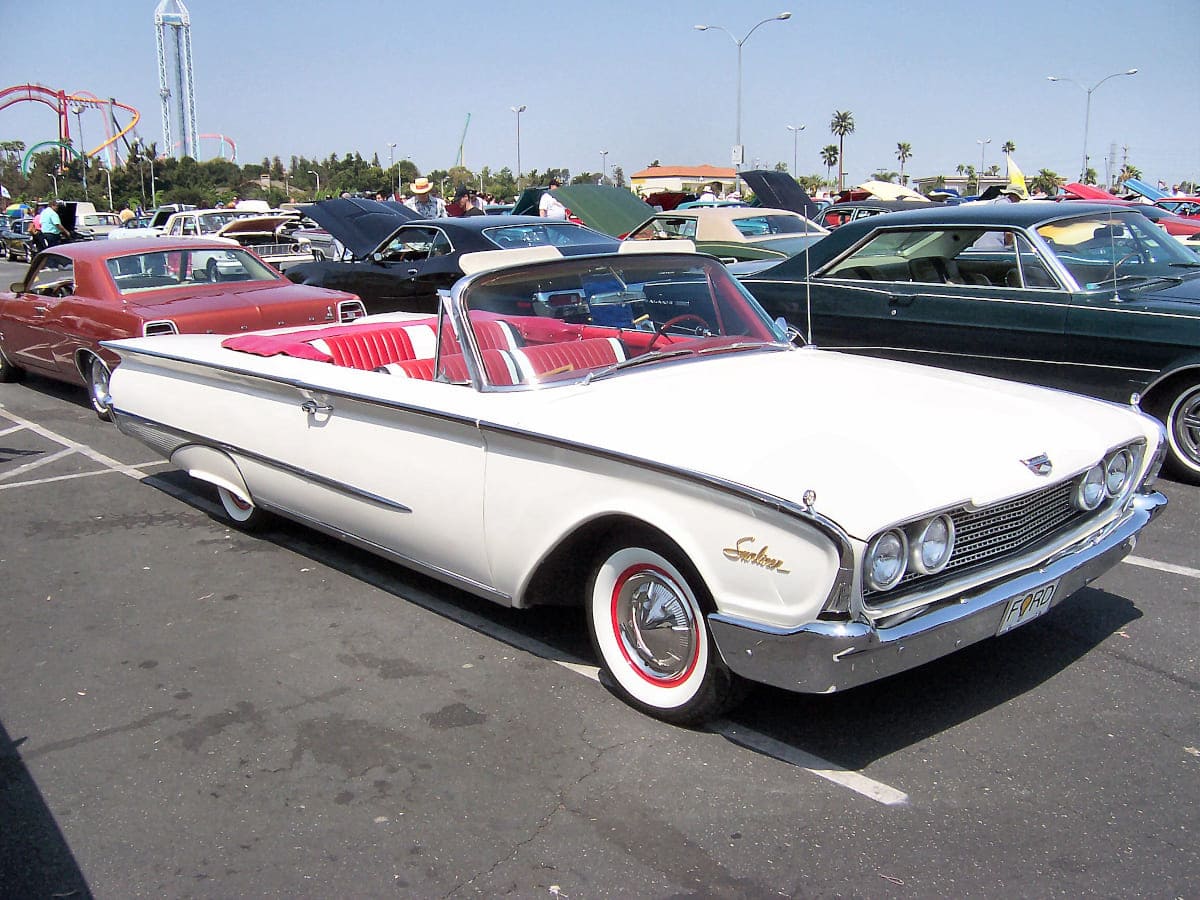
First Introduced: Early 1900s
Last Removed: 2020s
Two-Door Coupes were once celebrated for their sporty, elegant design and compact profile. Their decline can be attributed to shifting consumer preferences toward more practical vehicles, such as SUVs and sedans, which offer greater space and versatility. The rise of safety regulations and the demand for family-friendly features also contributed to their decrease in popularity.
Regardless, the two-door coupe's performance-oriented design and attractive appearance make them a nostalgic favorite. Their era-defining design and dynamic handling are all that remain of them, while their absence exemplifies the current trend toward more practical, multi-purpose automobiles.
Woodgrain Interiors
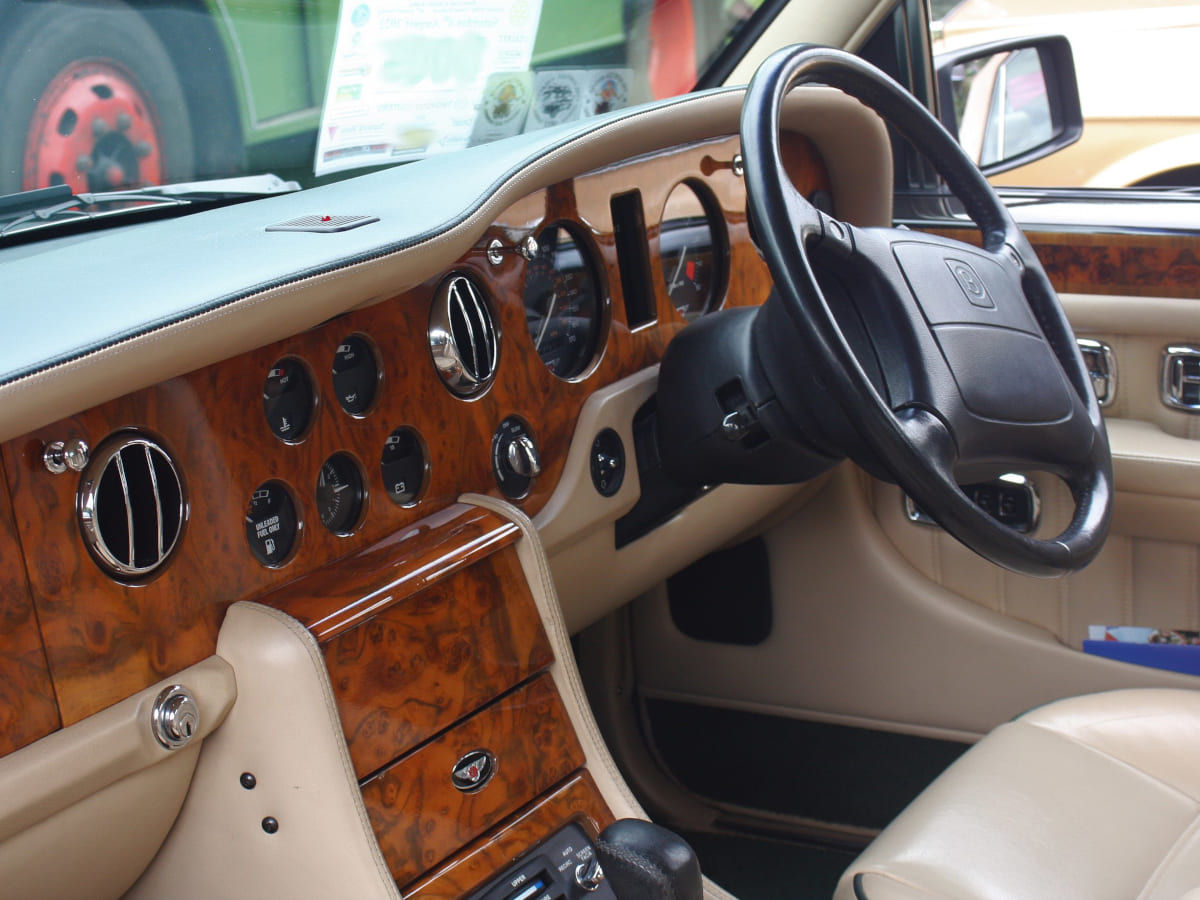
First Introduced: 1920s
Last Removed: 2000s
Woodgrain Interiors were once a symbol of luxury and sophistication, adding a classic, refined touch to vehicle cabins. Their decline was driven by the rise of synthetic materials and modern design trends favoring minimalist and high-tech aesthetics. As manufacturers moved towards materials that offered durability and lower maintenance, genuine woodgrain interiors fell out of favor.
Even while woodgrain interiors aren't very modern anymore, they nonetheless convey an air of classic refinement and great workmanship from a period when cars prioritized comfort and luxury. Their absence is missed and we pout at the trend toward more modern and practical interior design in today's automobiles.
Curb Feelers
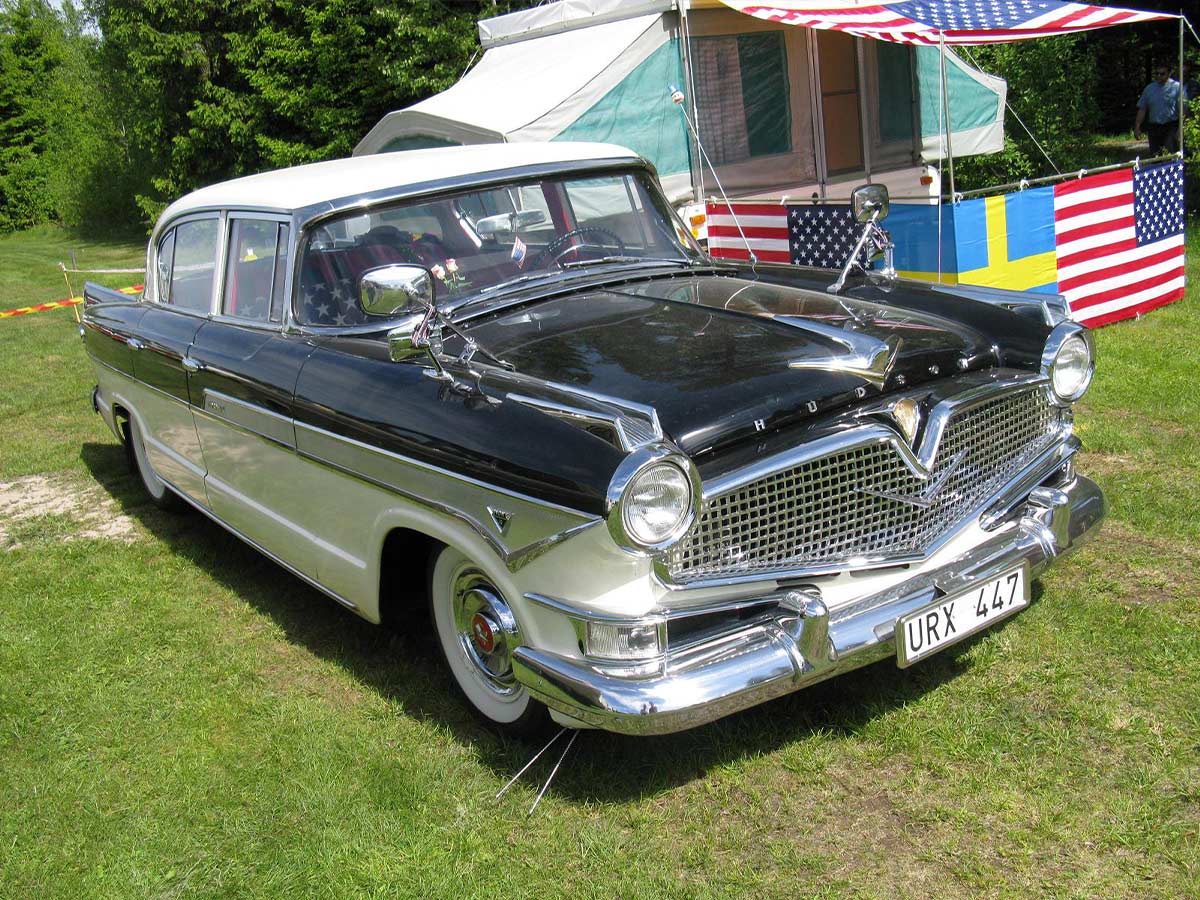
First Introduced: 1950
Last Removed: 1980
Those little spring-loaded whiskers protruding from your car's side weren't automotive acne, they were parking precision instruments. Curb feelers were the original parking sensors, giving you that satisfying scraping sound when you got too close to the curb, saving countless hubcaps and bumpers from expensive scratches.
No beeping, no dashboard warnings, no computer chips, just pure mechanical feedback that actually worked. Modern parking sensors might be more sophisticated, but they lack the tactile honesty of curb feelers. Plus, they gave cars a distinctive look, like automotive antennae announcing "I'm a careful parker who takes pride in my ride." Sure, they weren't pretty, but they were effective, affordable, and oddly endearing in their utilitarian simplicity.
Carburetors
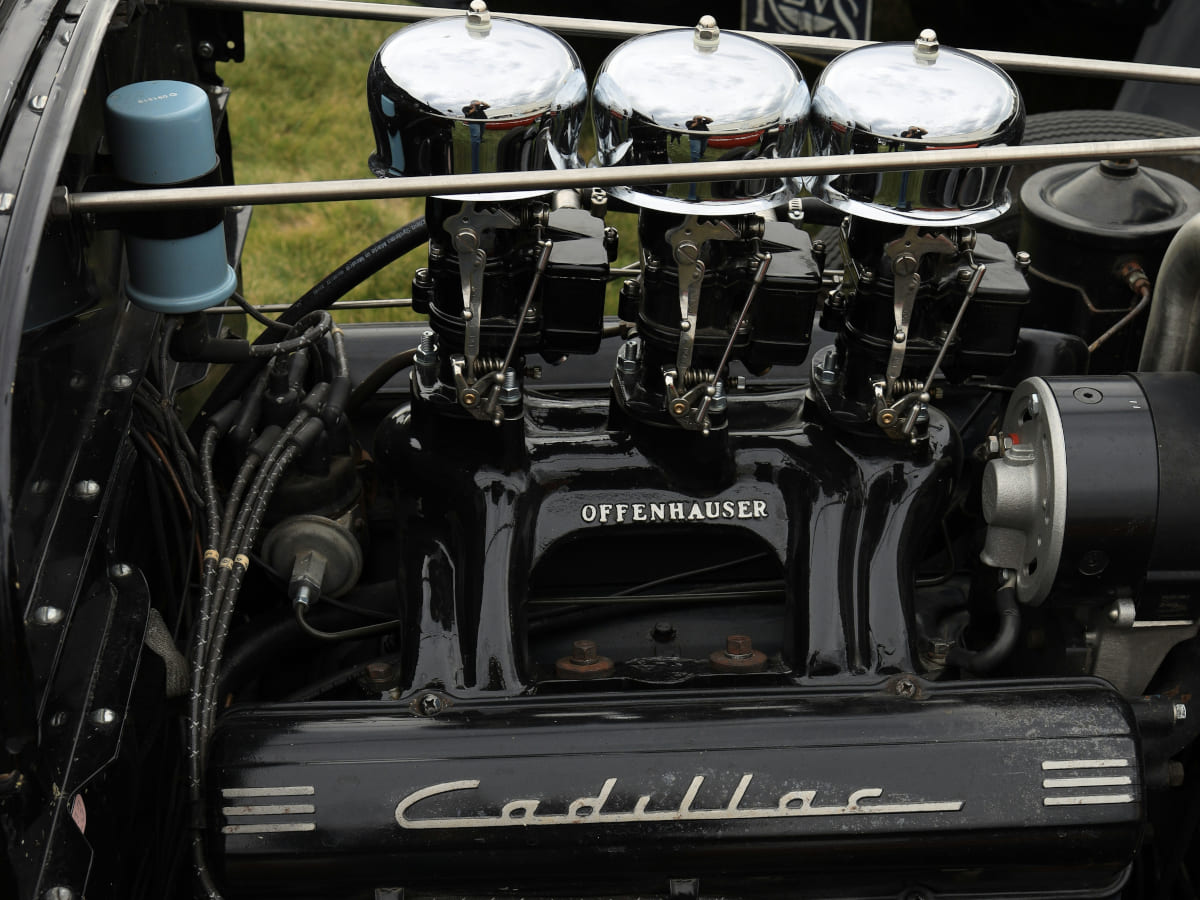
First Introduced: Early 1900s
Last Removed: 2000s
Carburetors were essential for mixing air and fuel in internal combustion engines, providing a simple, mechanical method of fuel delivery. Their decline began with the rise of fuel injection systems, which offered greater efficiency, precision, and emissions control. Fuel injection technology provided more reliable performance and improved fuel economy, leading to the gradual phase-out of carburetors.
Even though carburetors aren't really useful anymore, many still remember them for the unique, tactile feeling of tuning them and how simple they were to use. Their exit exemplifies how the car industry is moving towards electronically controlled systems that are more complex and fulfill contemporary performance and environmental regulations.
Pop-Up Headlights
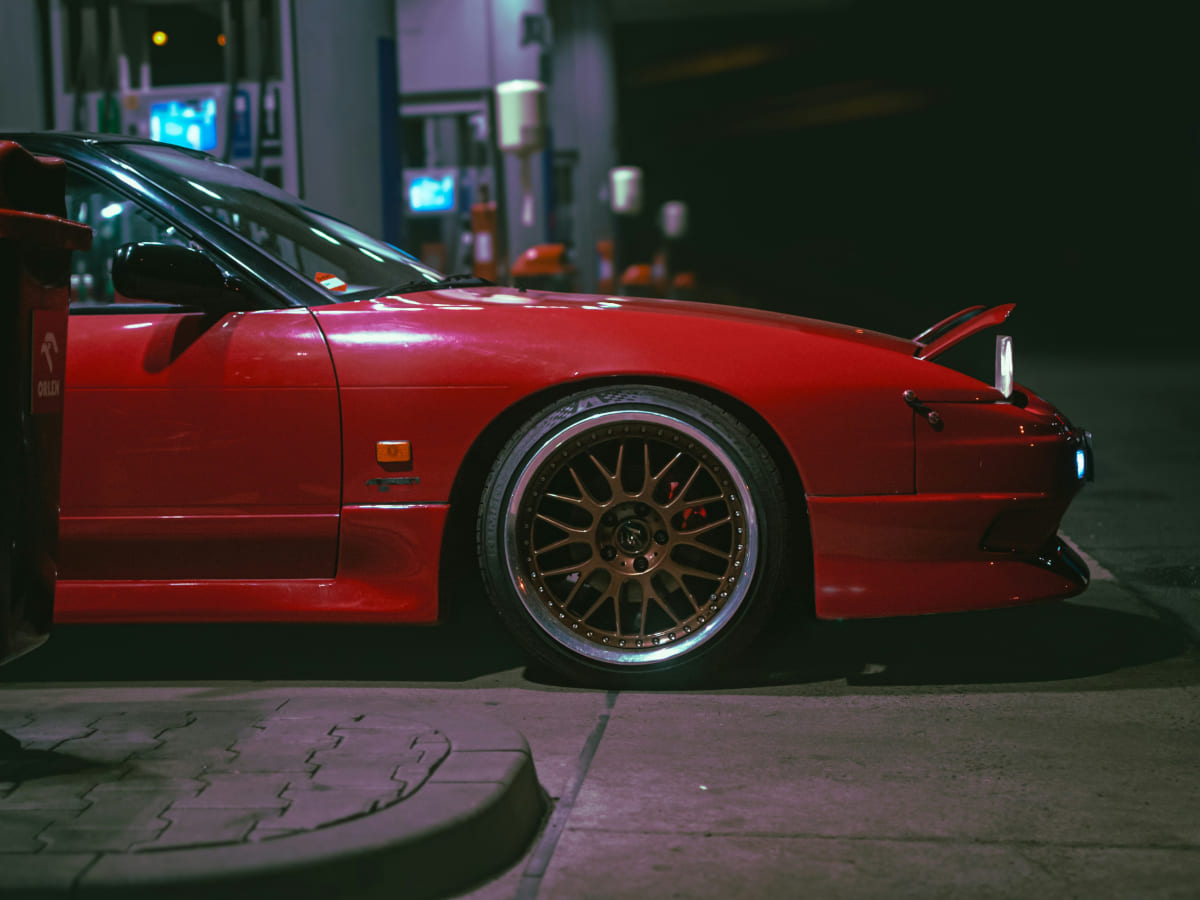
First Introduced: 1950s
Last Removed: 2000s
Pop-Up Headlights were iconic for their futuristic appeal and were a hallmark of many sports cars. Their decline was due to increasing regulations and the need for more aerodynamic, streamlined vehicle designs. As safety standards tightened and the desire for more consistent headlight performance grew, fixed headlights replaced pop-ups.
Even though they're no longer around, pop-up headlights still hold a special place in our hearts as a cherished symbol of automotive nostalgia. They bring to mind classic sports cars and cutting-edge design, capturing our imagination. Their unique, mechanical charm and the thrill of their theatrical reveal continue to capture the imagination of car enthusiasts who miss the distinctive character they brought to vehicles.
 Author
Jennifer Freehill
Last Updated: July 13, 2025
Author
Jennifer Freehill
Last Updated: July 13, 2025